E E E E W W W W R R R R E E E E
L L L L A A A A L L L L I I I I N N N N
RICE JOINS THE AMERICAN ATHLETIC CONFERENCE

FALL 2023
‘
‘
‘
‘

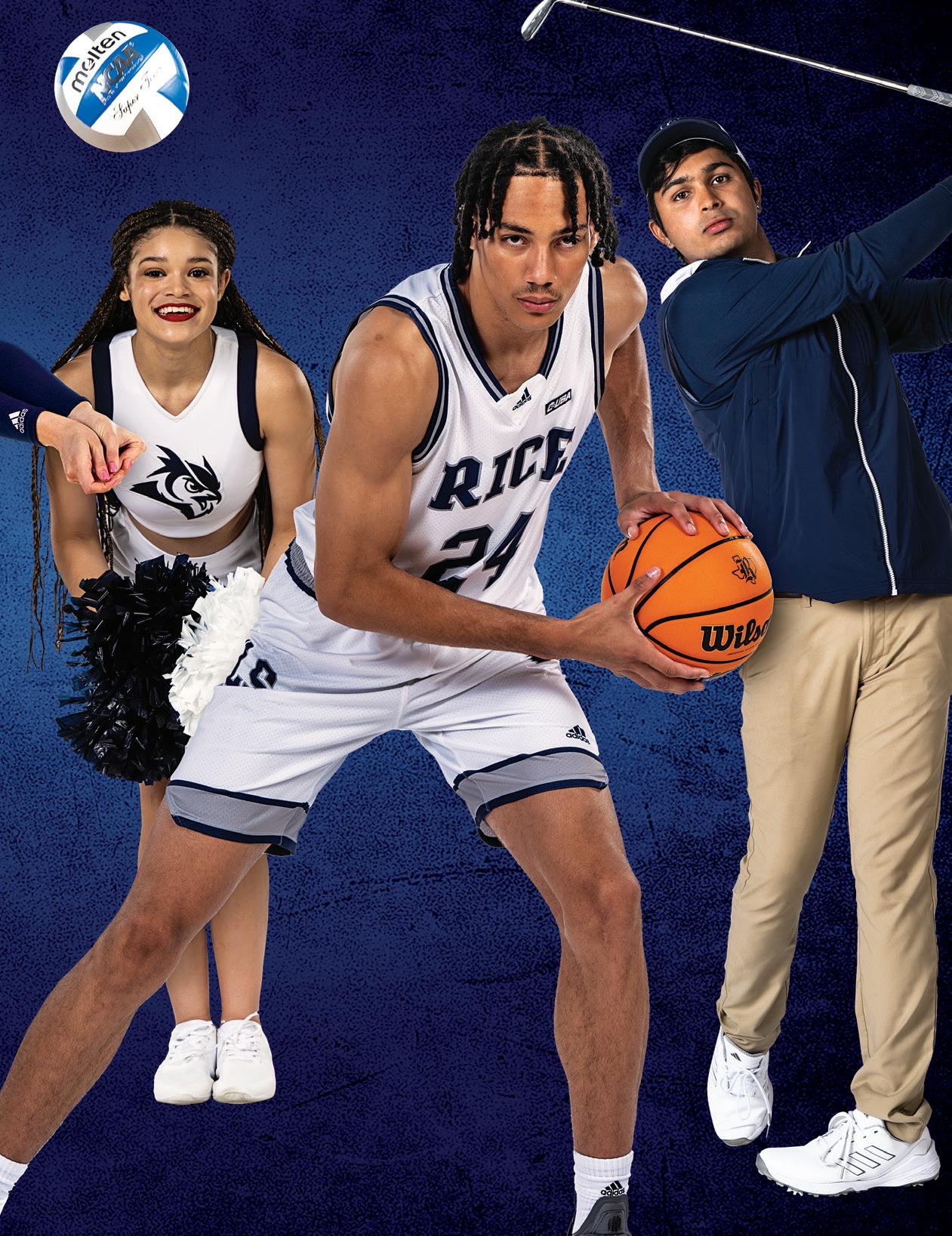
How Our Garden Grows
The Friedman Holistic Garden provides on-site learning and a bounty of food for Rice’s campus.
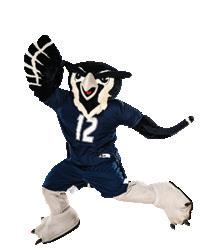

6 RICE MAGAZINE FALL 2023 RICE MAGAZINE FALL 2023 CONTENTS 26 Welcome to the American Rice Athletics anticipates a new level of competition, recruitment and visibility with the move to the AAC. 32 To Serve Is To Live
people at all times
to live
PHOTO BY GUSTAVO RASKOSKY
On her honor, Noorain Khan will try to help
and
by the Girl Scout Law. 36
FEATURES
DEPARTMENTS
Sallyport 9
The Thresher’s new editors in chief, street fashion, Global Paris’ EcoStudio and Utana Umezaki’s Quad Fellowship
Wisdom 19
Maus in the library, making hydrogen from sunlight, Provost Amy Dittmar, “The Ferryman” and radical women writers
Alumni

41
Tomeka McLeod’s fuel future, the “Rice Update,” a letter home, science and service, Classnotes, and books
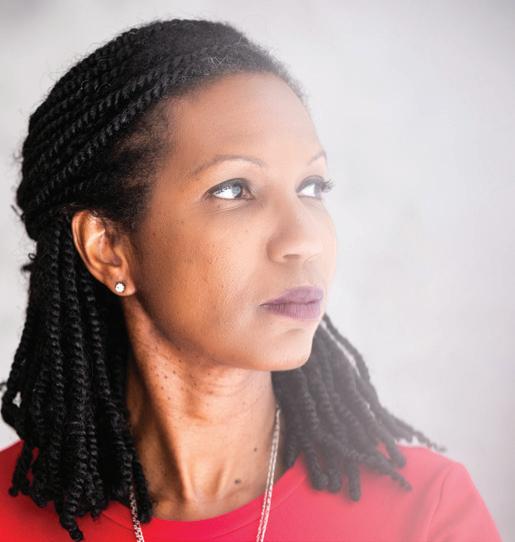
Last Look
A farewell to the old Sid Rich residential college

50

MAGAZINE.RICE.EDU 7
RICE MAGAZINE FALL 2023 CLOCKWISE
FROM TOP LEFT: PHOTO BY ZEISHA B., PHOTO BY JEFF FITLOW, PHOTO BY BRANDON MARTIN, ILLUSTRATION BY ADAM CRUFT
CONTRIBUTORS
RICE MAGAZINE
Fall 2023
PUBLISHER
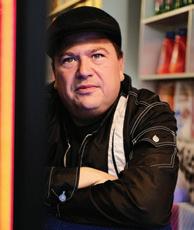
Office of Public Affairs
Andrew Bell
(“Welcome to the American”) joined Rice as a media relations specialist in February. A former newspaper reporter, he has a passion for storytelling through the lens of sports and news coverage.
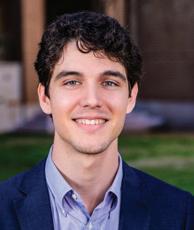
Autumn Horne ’22
(“How Our Garden Grows”) likes telling the stories she thinks are overlooked or unexpected. She has a Ph.D. in psychological sciences from Rice.
Jeff Fitlow (“Welcome to the American”) has been capturing Rice’s stories through his camera lenses for nearly 30 years. He spends his free time listening to live music and exploring with his family and their dog, Cooper.
Melinda Spaulding Chevalier, vice president EDITOR


Lynn Gosnell
ART DIRECTOR
Alese Pickering
EDITORIAL DIRECTOR
Tracey Rhoades
ASSISTANT EDITOR
Hilary C. Ritz
PHOTO/VIDEO
Jeff Fitlow, Brandon Martin, Gustavo Raskosky
PROOFREADER
Jenny West Rozelle ’00
CONTRIBUTORS
Adrienne Frank
(“To Serve Is To Live”) is the longtime editor of American University’s flagship magazine. She’s an alumna of the Girl Scouts and counts frozen Thin Mints among her biggest vices.
Readers Respond
Zeisha Bennett ’25
(“Inner Loop Style”) is a student intern who goes by Zeisha B. in our offices. She finds joy in showcasing the grace and elegance within the art of designers and stylists.
Michael Nagin (“To Serve Is To Live”) is a portrait and fashion photographer born in Brooklyn. After many years of working beside the industry’s best photographers, he moved behind the camera in 2015.
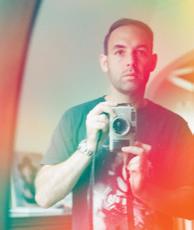
I love learning about all the great research at Rice. I also especially like the graphics and photos, particularly illustrations by Chris Gash. Thank you and keep up the great reporting. — Jean Packard
Packard retired from Rice in 2018 after 11 years as a research analyst in Rice’s development office
Please send your feedback, constructive criticism or thoughtful appreciation to ricemagazine@rice.edu — or surprise us with a letter or postcard!
Andrew Bell, Silvia Cernea Clark, Adam Cruft, Schaefer Edwards ’13, Daniel Fishel, Adrienne Frank, Alexander Gelfand, Autumn Horne ’22, Delphine Lee, Laura Furr Mericas, Alex Eben Meyer, Michael Nagin, Thu Nguyen ’17, Jodie Sadowsky, Alex Schwenke, Kayt Sukel, Sukhada Tatke, Mike Williams
INTERNS
Zeisha Bennett ’25
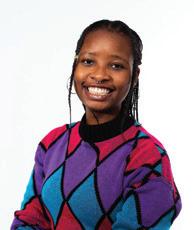
Nithya Ramcharan ’25
Rice Magazine is published four times a year and is sent to Rice alumni, faculty, staff, parents of undergraduates and friends of the university.
© October 2023, Rice University
8 RICE MAGAZINE FALL 2023
THE RICE UNIVERSITY BOARD OF TRUSTEES
Robert T. Ladd, chair; Elle Anderson; Bart Broadman; D. Mark Durcan; Josh Earnest; Michol L. Ecklund; Terrence Gee; George Y. Gonzalez; James T. Hackett; Jennifer Kneale; Holli Ladhani; Lynn A. Lednicky; Elle Moody; Brandy Hays Morrison; Asuka Nakahara; Vinay Pai; Brian Patterson; Byron Pope; Gloria Meckel Tarpley; Jeremy Thigpen; Claudia Gee Vassar; James Whitehurst; Lori Rudge Whitten; Randa Duncan Williams; Michael Yuen.
ADMINISTRATIVE OFFICERS
Reginald DesRoches, president; Amy Dittmar, provost and executive vice president for Academic Affairs; Stephen Bayer, vice president for Development and Alumni Relations; Paul Cherukuri, vice president for Innovation; Melinda Spaulding Chevalier, vice president for Public Affairs; Kelly Fox, executive vice president for Finance and Administration; Caroline Levander, vice president for Global; Tommy McClelland, vice president and director of Athletics; Paul Padley, vice president for Information Technology and chief information officer; Ramamoorthy Ramesh, executive vice president for Research; Yvonne Romero da Silva, vice president for Enrollment; Omar A. Syed, vice president and general counsel; Allison Kendrick Thacker, vice president for Investments, treasurer and chief investment officer.
POSTMASTER
Send address changes to: Rice University
Development Services–MS 80
P.O. Box 1892
Houston, TX 77251-1892
EDITORIAL OFFICES
Creative Services–MS 95
P.O. Box 1892
Houston, TX 77251-1892
Phone: 713-348-6768
ricemagazine@rice.edu
FALL AT LAST
WELCOME TO
ANOTHER
JAMpacked, thoughtful, awe-inspiring, newsy, globe-trotting, informative — and stylish — issue of Rice Magazine. We’re not kidding. Our fall quarterly brims with the energy that befits the arrival of a new academic year.
First, welcome to the Class of 2027. Our newest undergraduates arrive during a time of growth and change at Rice. Did you know they hold the record for the lowest-ever admittance rate? Check out “The Big Number,” the first in our new series highlighting the numbers behind Rice’s news.
About the cover: This fall marks the launch of a new era in Rice athletic competition. To mark the Owls’ flight up to the American Athletic Conference, Art Director Alese Pickering collaborated with David Pillen, associate athletic director, to invite student athletes to Tudor Fieldhouse’s East Gym for a photo shoot marking the occasion. Veteran photographer Jeff Fitlow captured the action for the six-page cover design. Read the accompanying story, “Welcome to the American,” then go online for some “behind the scenes” extras — including a dancing Sammy.
Were you a Girl Scout? I count the experiences of camping, earning badges, taking part in service activities and singing humorous songs as among the most formative of my city childhood. We at Rice were already familiar with alumna Noorain Khan’s extraordinary work in philanthropy at the Ford Foundation, but we had never
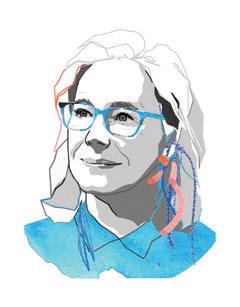
featured the consequential advocacy of this former Rhodes scholar. When Khan was named national board president of the Girl Scouts of the USA in July, we knew we had an even better story, “To Serve Is To Live,” to share.
After a summer of torturous heat, we’re happy to report that Rice’s Betty and Jacob Friedman Holistic Garden is thriving — not only as an abundant source of vegetables, herbs and fruit for our campus and community but also as a classroom and research field site — and a natural space to cultivate emotional well-being. We are delighted to feature the work of horticulturalist Joe Novak, his staff and Rice students in “How Our Garden Grows.”
This is our highlight reel. Dig deeper for stories on the Rice Thresher’s new editors, student fashion, Rice Provost Amy Dittmar’s strategic vision, innovative research from faculty and more accomplishments of extraordinary alumni — all this and a recipe, too.
Have some feedback to share with fellow readers? Kindly write to me at lynn.gosnell@rice.edu.
ILLUSTRATION BY PADDY MILLS MAGAZINE.RICE.EDU 9
FROM THE EDITOR
Welcome to the Class of 2027. Our newest undergraduates arrive during a time of growth and change at Rice. Did you know they hold the record for the lowestever admittance rate?
is from underrepresented minority groups, and another 13% are international students. They represent 53 states and territories and more than 47 countries.
For the next several years, these students will embark on a journey that will shape them intellectually, as a person and as a future professional. They will take classes from national and international experts in their fields. They will live in a supportive residential community with their
OUR UNDERGRADUATE MISSION
THE START OF THE FALL semester is one of my favorite times at Rice. It represents new beginnings, possibilities, and hope and excitement for the future. It’s also a spirited reminder of Rice’s foundational pillar — our beloved undergraduate program.
Watching our undergraduate matriculants move into their residential colleges and receive warm greetings from their peers, professors and the Rice community is truly heartwarming. The culture of care we boast about year-round is on full display.
Rice’s supportive community and residential colleges, along with our fantastic faculty and undergraduate programs, are some of the main reasons why students from across the world want to come to Rice. Our admissions are an excellent indicator of this.
The Class of 2027 is the most selective in Rice’s history, with fewer than 8% of the 31,000 applicants being accepted. It is also one of the most diverse, with the fall class having no racial majority — 32% of the class
peers. They will exchange experiences and ideas with people from diverse backgrounds and who come from places across the world. They will be involved in discussions that challenge their beliefs, while others reaffirm the beliefs that they hold near and dear to them. And, finally, they will be challenged to achieve excellence in all they do so that they leave Rice equipped and inspired to transform lives.
A recent article in the Chronicle of Higher Education titled “Universities Can’t Do Everything” highlights how many top universities today are spending a great deal of time trying to please multiple, often contradictory, constituencies. Meanwhile, less attention is being paid to what the same universities tout as their No. 1

priority — the welfare and education of undergraduates.
I am proud to say that at Rice, undergraduate education has always been and will remain core to the university’s mission. Yes, we want to grow Rice’s research enterprise and graduate programs. And, yes, we want to focus on innovation and partnerships that will accelerate solutions that will change the world. These things will only further enhance our undergraduate programs and the experiences of our undergraduate students, as they are truly synergistic.
Rice’s undergraduate program is one of the university’s best assets. Our foundation in this area is strong. As president, my job moving forward is to continue to build on that foundation to create an even better experience for our students. The question is, how do we do this in the context of today’s higher education landscape and the complexities of the world we live in?
We will continue to focus on providing a rigorous and wellrounded education, one that provides a broad-based liberal arts education that complements our disciplinary strengths. Students will be exposed to the complexities facing society and be equipped with the knowledge, critical thinking skills, ethical leadership skills and empathy to address them.
At no point will we lose sight of our most cherished principles, both present and future. A quality undergraduate education that equips individuals to enact positive change in their lives and the lives of others remains our steadfast commitment.
10 RICE MAGAZINE FALL 2023 ILLUSTRATION BY PADDY MILLS PRESIDENT DESROCHES
Rice’s undergraduate program is one of the university’s best assets. Our foundation in this area is strong. As president, my job moving forward is to continue to build on that foundation to create an even better experience for our students.
BY SCHAEFER EDWARDS ’13

JOURNALISM
the Thresher’s new editors in chief.
It Takes Two Meet
CAMPUS NEWS AND STUDENT LIFE PHOTOS BY
B. MAGAZINE.RICE.EDU 11
SALLYPORT
ZEISHA
THE STORIED RICE
Thresher is now led by two intrepid student journalists: Riya Misra, a Wiess junior from outside Boston, and Prayag Gordy, a McMurtry senior hailing from the D.C. suburbs of Maryland. They were elected the Rice student newspaper’s newest editors in chief by Thresher staff as the 2022–23 academic year came to a close.
The two Owls share a deep investment in the importance of student journalism and a heartfelt desire to lead a truly modern student news organization.
“Calling her a ‘people person’ is putting it simply,” Gordy says of Misra. “She’s very good at building close relationships with everyone she encounters, and that’s something that’s
really important in a newsroom — especially in a small newsroom that we want to expand.”
“He’s very ambitious and goaloriented but at the same time pays close attention to the details,” Misra says of Gordy. “He has the mindset that can’t just make a paper stay good through the years but improve.”
These strengths are what allowed Misra (along with former Thresher Editor-in-Chief Morgan Gage ’23) to thoughtfully share this past spring’s stories of Rice students with suicidal ideation and to grapple with on-campus sexual violence in a fall 2022 feature. They also helped Gordy build and lead the Thresher’s special projects team to produce data-heavy yet approachable packages on topics ranging from student abortion to Rice baseball.
The two each wrote for their respective school papers pre-Rice. Gordy felt called to reporting after being taken aback by the political discourse of 2016’s presidential election. Misra had a deep appreciation for the written word instilled in her by supportive teachers as well as by her mother — a broadcast journalist in India before immigrating to the U.S. Both Gordy and Misra started out at Rice’s paper as writers.
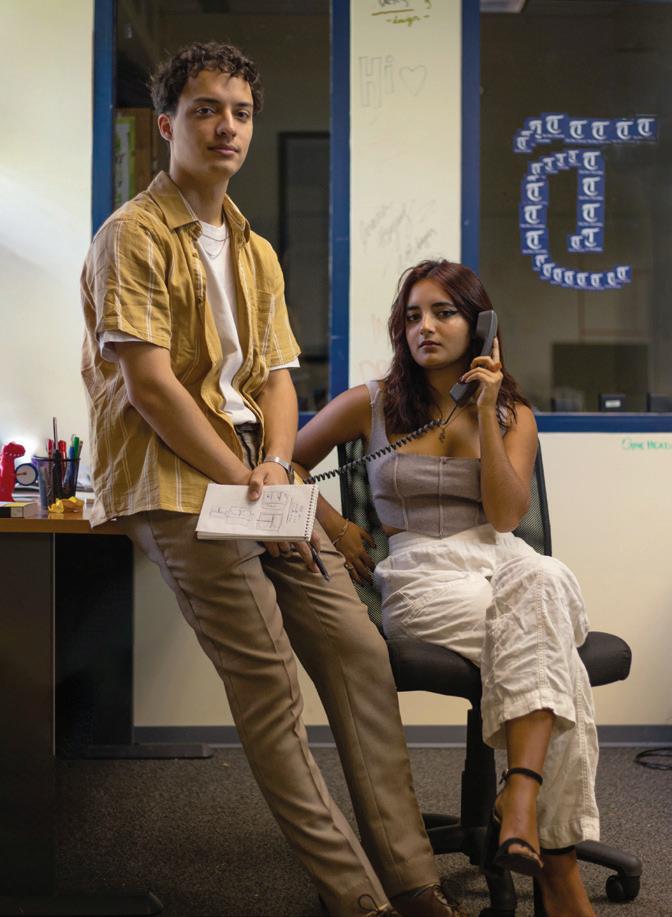
“We really want the Thresher to be a cornerstone of student life,” Misra says. A big part of that means continuing to build “a much larger, fully fleshed-out social media team coming up with unique ways to take our stories and package them online.”
“That involves data journalism with attractive charts and appealing yet accessible interactives,” Gordy adds. “Making sure that we are meeting our readers where they are and giving them what they need to know in the form that they want — that’s the goal.”
“When I read pieces that are created by my peers,” Misra says, “you can see [it], whether it’s a shared understanding of the type of language, or the syntax, or even just the shared cultural knowledge when someone references a meme … it makes us accessible for young adults our age. Student journalists level that playing field.”
12 RICE MAGAZINE FALL 2023
When I read pieces that are created by my peers, you can see [it], whether it’s a shared understanding of the type of language, or the syntax, or even just the shared cultural knowledge when someone references a meme … it makes us accessible for young adults our age.
The Big Number
RICE’S ACCEPTANCE RATE this fall was the lowest ever reported, according to the Office of Admission. All told, there were 31,059 applications for the Class of 2027.
In addition to the lowest-ever acceptance rate, the number of new first-year students — 1,127, plus 42 transfer students — was also lower in comparison to the two previous years. “We intentionally aimed to enroll a smaller class this year, given the two previous enrolling classes were over 1,200 students,” says Yvonne Romero da Silva, vice president for enrollment.
WHERE IS HOME FOR OUR NEW STUDENTS?
Rice reports 982 total new students from the U.S., a figure that includes every state except Vermont. As is typical, students from Texas continue to choose Rice for their undergraduate education, but other top states include California, New York, New Jersey, Illinois and Florida.

Also, 145 new international students arrived on campus from 47 countries. Top countries represented include China, India, Canada, Taiwan and South Korea.
“We are pleased that the incoming class is very diverse — 32% of our domestic students identify as underrepresented students of color,” Romero da Silva says. “[The class] is an incredible reflection of President DesRoches’ vision for the future of Rice and where Rice is headed. They are a talented and gifted group of students who bring their unique gifts, passions and perspectives to Rice from all across the world.”
SALLYPORT
MAGAZINE.RICE.EDU 13
PHOTO BY BRANDON MARTIN
CLASS OF 2027 7.9%
STUDENT FASHION


Inner Loop Style
STORY AND
This fall, Rice students have been active participants in the comeback of Y2K fashion while also dabbling in late ’90s silhouettes. Despite the summer weather, dark and muted colors like tree bark brown, creamy beige and ashy sage green have been staples. Even in the oppressive temperatures of humid Houston, these students prove that more is indeed more.
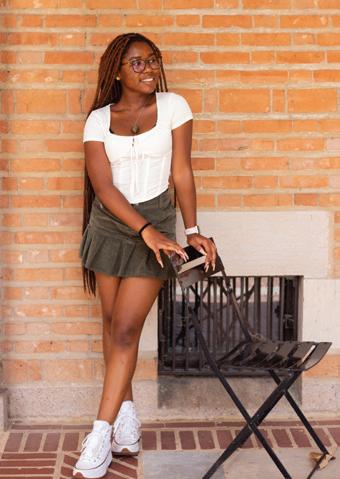
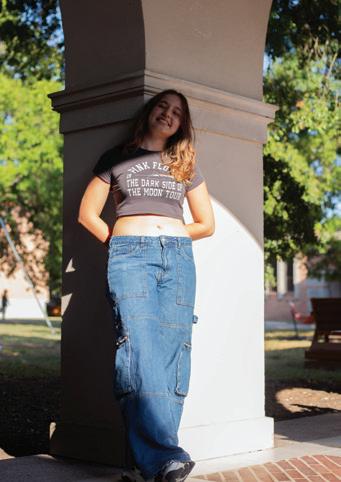
SALLYPORT
PHOTOS BY ZEISHA B.
14 RICE MAGAZINE FALL 2023
Clockwise from top right: Alessa Elkareh ’26, Kathryn Codiamat ’24, graduate student Collin Jumes and Tinde Koroma ’25




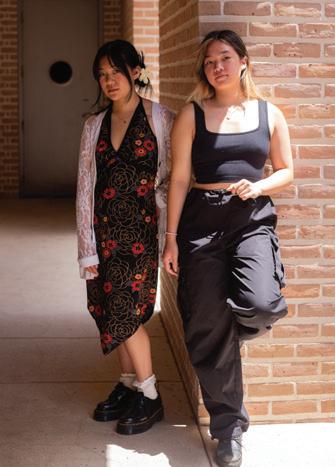
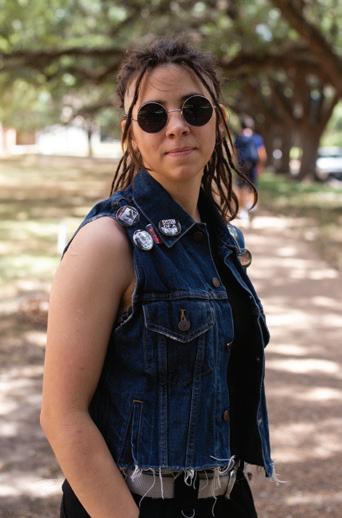 Clockwise from top left: Chelsea Zhao ’24, Enoch ’25, Aiden Li ’25, Jadir da Silva ’26, Chloé Khuri ’26, and Irene Wang ’24 (left) and MyCo Le ’24 (right)
Clockwise from top left: Chelsea Zhao ’24, Enoch ’25, Aiden Li ’25, Jadir da Silva ’26, Chloé Khuri ’26, and Irene Wang ’24 (left) and MyCo Le ’24 (right)
SYLLABUS
Bienvenue à Maymester
EcoStudio gathers creatives from across disciplines to study and create environmental arts projects. We’ll focus on a range of topics and experiment with strategies and techniques useful across various media types. As we learn about the relationship between art and environment, we’ll explore our own Parisian environment. Classes will involve fieldwork in Paris, museum and gallery visits, discussions in parks and creative studio time. Students will devise individual projects in their own medium and develop collaborative work in multimedia teams.
WHEN EMELIA GAUCH SET OUT TO EXPLORE the Rue des Rosiers in Paris, she got lost — on purpose. This was the assignment from her professor, Lina Dib ’13, at Rice’s new Global Paris Center. As disoriented as Gauch initially felt, she soon discovered she could read the street signs in this Jewish neighborhood, not because they were in French — a language she does not know — but in Hebrew. Here, she saw men in kippahs who reminded her of her grandfather. She felt safe getting lost in an unfamiliar place.
A junior visual arts major, Gauch was enrolled in EcoStudio — a class in the first Maymester in Paris and part of the rollout of Rice’s new Global Paris Center. Before sending the students off into the city to get lost, Dib, who is an artist, anthropologist and lecturer at Rice, had introduced them to the practice of “dérive,” or drift, advocated by the Situationists and particularly the philosopher Guy Debord.
ENST 422 EcoStudio: Arts, Environment, Media DEPARTMENT Environmental Studies
DESCRIPTION EcoStudio
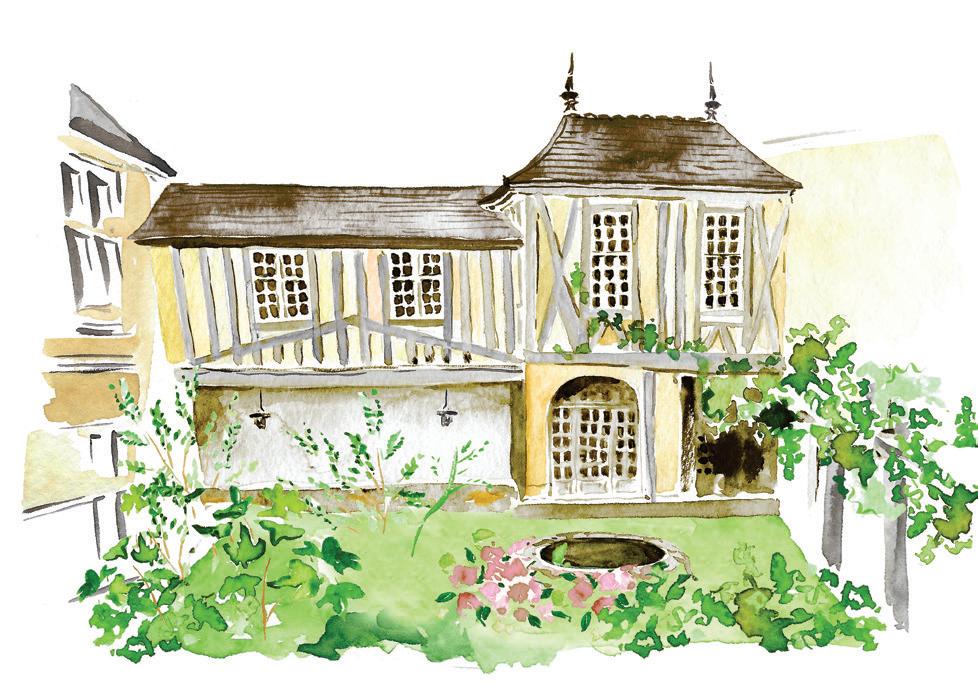
Simply put, when you explore without a destination, you experience emotional and behavioral shifts. With this in mind, students were asked to record their responses as they wandered. Dib wanted them to indulge in the “automatic movement of walking” so that ideas could simmer before they turned into “beautiful creative explosions.”
How humans interact with the space around them, particularly with nature, is at the heart of Dib’s course. Through the lens of art, she raised questions of environment, ecology and sustainability. How can we carve out a sense of agency in the Anthropocene? What can we make of the personal narrative as it intersects with this larger historical backdrop? This was the path she wanted students to tread.
Fifteen students across disciplines, ranging from writing and visual arts to science and architecture,
16 RICE MAGAZINE FALL 2023 ILLUSTRATION BY ALEX SCHWENKE
gathers students together from across media and practices to study and create environmental art.
participated in the course. The multidisciplinary nature of the cohort allowed the kind of cross-pollination that tackling climate change requires. The classes were held a few blocks from the Rice Global Paris Center in the heart of the city, in the old Marais quarter of the 4th arrondissement. Marais is studded with narrow cobblestone streets, galleries and cafes, hidden gardens, and old mansions. Nearby is Notre Dame. The Seine flows alongside. In short, it is an ideal place for exploration.
“This course could work anywhere because we touch on these larger conversations about how mankind has shaped the very concept of nature. But Paris was the perfect location for it, with all its history, urban design and art,” says Dib. And of course, there are museums. One sunny afternoon, after a visit to the Musée d’Orsay, the students were deep in discussion about a painting by Claude Monet they had just seen. Was the fog or the bridge the protagonist of the painting? Could it be that the scene wasn’t a particular moment frozen in time but a depiction of a trembling atmosphere?
The day before, the class had discussed John Thornes’ idea of “environmental art,” in which landscapes are not static backdrops to life as it unfolds but representative of an atmosphere that is dynamic and ever changing. Students created their own projects on the subject. One pair captured “atmosphere” in cups from 16 different locations in
Paris. “Our task was to capture an atmosphere, which in and of itself is something of a paradox. How can we depict something that is never the same way twice?” they wrote. Another group created a video of a sunset, using a filter to create vivid pink and orange tones and depicting what the sky
might look like as pollution increases. Dib taught how different artists have tried to represent nature and the human relationship with it, whether through dominance over nature or by the discovery of it, or by recognizing the futility of trying to control it. For instance, Dib says, “You see William Turner’s huge storms and clouds and shipwrecks and understand we’re just tiny little specks.”
After a visit to the Natural History Museum, the class reckoned with species extinction. Cindy Sheng, a senior cognitive sciences major, created a performance piece titled “Dégustation du Passé.” She created a haunting scene in a distant future where people have gathered for a “tasting” of foods from the past. She chose foods she and her friends had been luxuriating in while visiting Paris — chocolate, coffee and wine — all of which are threatened by the climate crisis.
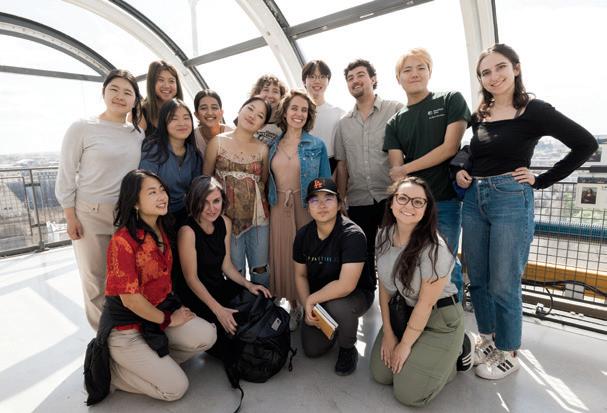
Musab Salah, a first-year architecture student, says he loved the course because it was unconventional. “One day we read and had discussions; the next day we went to a museum. Although the class was in Paris, I think Paris was the class,” he says.
— SUKHADA TATKE
To learn more about upcoming research events, conferences and student programs offered at the Rice Global Paris Center, visit global.rice.edu.
A GLOBAL LAUNCH
The Rice Global Paris Center recently concluded its inaugural summer series of academic programs and events, which included a rich variety of conferences, workshops and undergraduate courses. Located in the heart of the historic Marais district, the center hosted over 500 Rice students, faculty and research collaborators from across France and Europe. “One of the things that makes this so special, not only for U.S. higher education, but for higher education around the world, is the way in which we are in the center of the city, partnering with local intellectual, cultural and arts institutions around pathbreaking questions in research that impact the entire world — whether that’s climate change, energy transitions, social justice, or health technologies and solutions,” says Caroline Levander, vice president for Global at Rice.
MAGAZINE.RICE.EDU 17
SALLYPORT
PHOTO COURTESY OF RICE GLOBAL PARIS CENTER
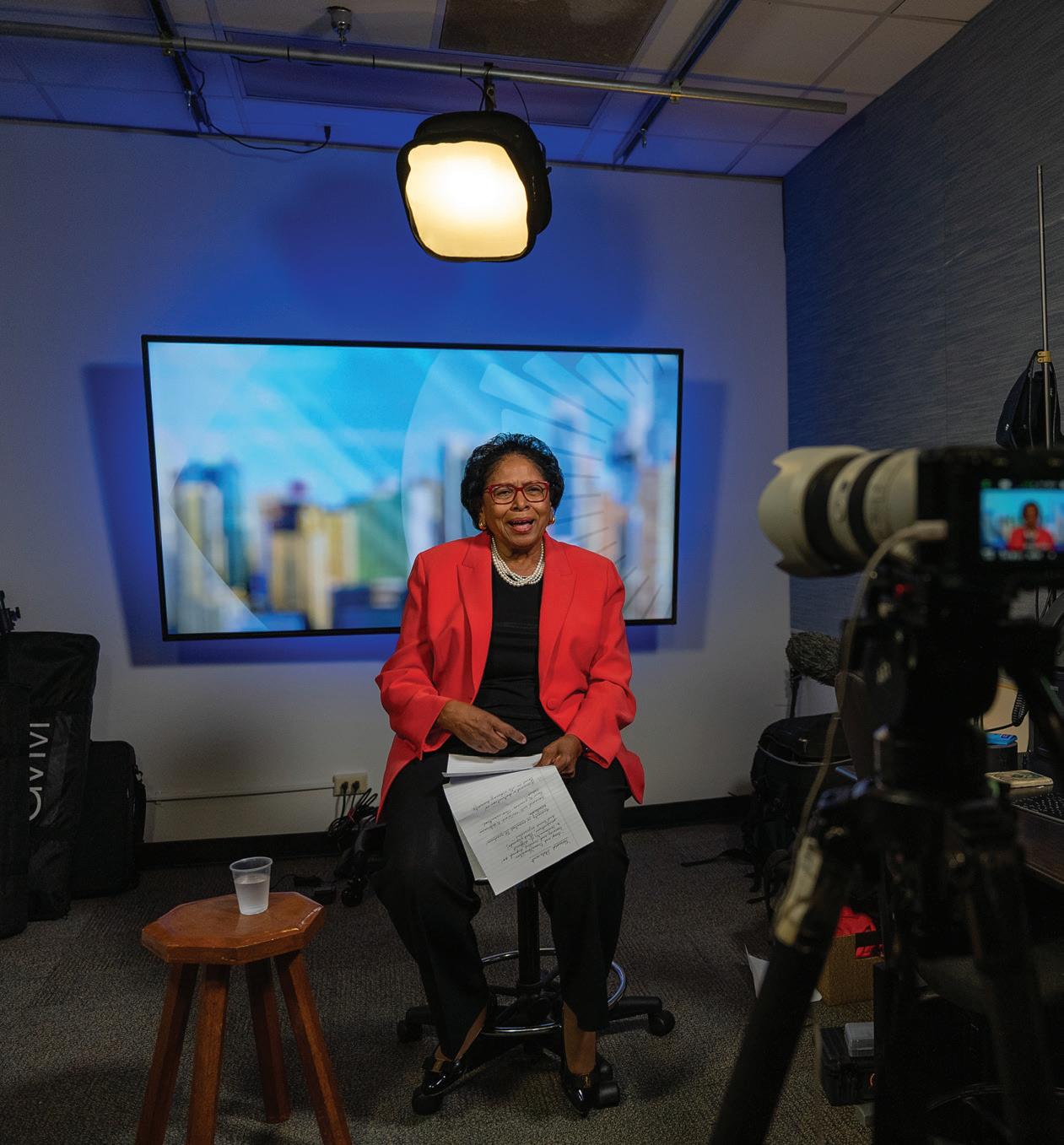
SALLYPORT
18 RICE MAGAZINE FALL 2023
June 30, 2023: President’s Distinguished Fellow Ruth J. Simmons being interviewed on “CBS Mornings” from the broadcast studio. (Look for a review of Simmons’ new memoir, “Up Home: One Girl’s Journey,” in the Winter 2024 issue of Rice Magazine.)
SPACES
The Broadcast Studio
From our campus to the world, Rice delivers expert insight.
THERE’S A SPACE THAT TELLS RICE’S stories, and it talks — a lot. Tucked away in the basement of Allen Center, the broadcast studio is incognito save for a small “On Air” sign above the door that flashes red when interviews are in progress. Since 2012, the 20-by-10 room has been the conduit between Rice and the outside world, a place where renowned faculty and alumni provide commentary about issues of the day and reveal breakthroughs and advances in research taking place in labs and centers across the university.

Equipped with VideoLink ReadyCam TV and standard- and high-definition video, the sequestered space has a big voice where live interviews are routinely broadcast to CNN, Fox News and NPR — often on short notice. Expert commentators include Katherine Tsanoff Brown Professor of Humanities Douglas Brinkley, who frequently provides insight about diverse political topics, the most recent to CBS News regarding former President Donald Trump’s arraignment in April; and President’s Distinguished Fellow Ruth Simmons, who was recently interviewed by “CBS Mornings” about the affirmative action ruling and how schools can work toward diversity.
“When people visit us, they say, ‘I had no idea this was down here,’” Brandon Martin, manager of videography, says. “It’s a unique area that provides campus insight for news sources, spanning local to international outlets. I also use the space to mentor undergraduate and graduate students about the art of storytelling.” While the room serves as the space for external communication, it also doubles as home base for Martin and campus photographers Jeff Fitlow and Gustavo Raskosky.
“The broadcast studio and Brandon’s keen understanding of networks’ technological and visual needs have played a key role in the transformation of Rice’s national media visibility,” says Jeff Falk, director of news and media relations. “The work of consistently attracting national and international attention to Rice is just plain hard work and an art.”
— TRACEY RHOADES
SALLYPORT MAGAZINE.RICE.EDU 19
PHOTO BY BRANDON MARTIN
Traveling Fellowship
During the yearlong Quad Fellowship, doctoral student Utana Umezaki finds international collegiality and STEM advocates alike.
PUTTING HER BEST FOOT forward isn’t just a way to help her own career in chemistry. Utana Umezaki advocates for all women in STEM fields. As one of two Rice students named last year to take part in the prestigious Quad Fellowship program, a collaboration between the United States, Australia, India and Umezaki’s native Japan, she now has an international audience.
The fifth-year graduate student in the Rice lab of chemistry chair Angel Martí-Arbona was selected for the program along with Sathvik Ajay Iyengar, a graduate student in the lab of materials scientist Pulickel Ajayan. This summer, Umezaki spent a week in Melbourne, Australia, with nearly all the 100 students in the 2023 cohort.
In Melbourne, Umezaki connected with other students who investigate Alzheimer’s and the amyloid beta proteins that aggregate in patients, a prime suspect in the disease and her focus in Martí-Arbona’s lab. “There aren’t many chemistry students in the 2023 Quad cohort, but there are a lot of neuroscience people,” she says. “Alzheimer’s is related to the brain, so we could talk about amyloid beta from the chemistry and neuroscience perspectives. That was very helpful.”
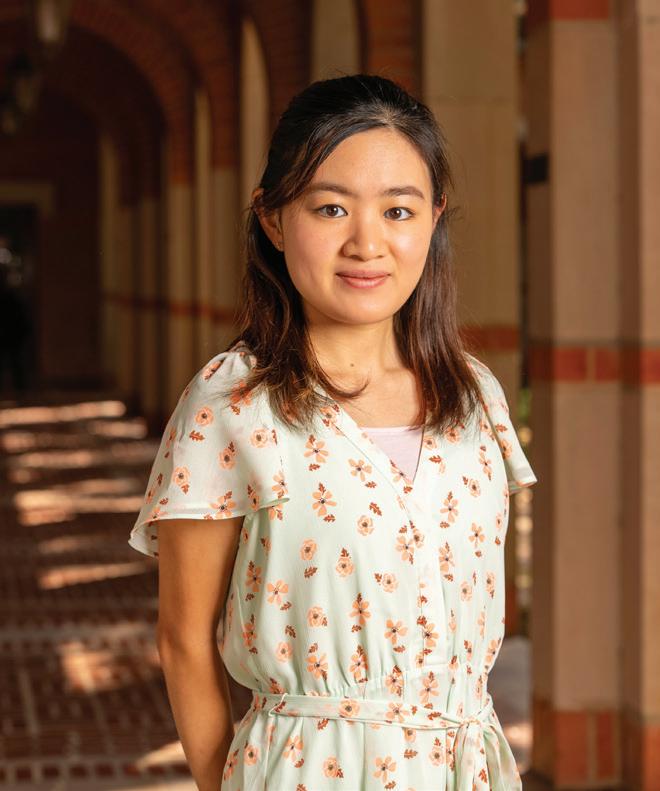
Umezaki first came to Rice from Japan in 2018 for the TOMODACHISTEM research internship program for female undergraduates. Later
she became the program’s graduate assistant. After finishing her graduate program at Rice, she plans to take on a postdoctoral position in the United States. “There are a couple of papers coming, one on methodology and one on amyloid beta, and hopefully I can submit them by the end of the year,” she says.
Umezaki says the Quad Fellowship will host virtual programs over the next few months, focusing on how to utilize STEM expertise for social good. She hopes the fellowship will lead to
collaborations, especially with women of like mind from all the participating countries.
“More than 50% of the Quad cohort are female, so that helped,” Umezaki says. “Because the fellowship is unique, with citizens from four countries, I could talk about the problems for women in STEM fields in each, and each has a different situation for sure.
“There are a lot of female scientists who are now changing the world,” she adds. “It was encouraging for me to see such persons in Australia.”
— MIKE
Angel Martí-Arbona is chemistry chair and professor of chemistry, bioengineering, and materials science and nanoengineering. Pulickel Ajayan is chair of materials science and nanoengineering, the Benjamin M. and Mary Greenwood Anderson Professor in Engineering, and professor of materials science and nanoengineering, chemistry, and chemical and biomolecular engineering.
20 RICE MAGAZINE FALL 2023
PHOTO BY GUSTAVO RASKOSKY
WOMEN IN STEM
Because the fellowship is unique, with citizens from four countries, I could talk about the problems for women in STEM fields in each, and each has a different situation for sure.
WILLIAMS
ECOLOGY
The Pangolin’s Dilemma
Data
camera-trap
BY SILVIA CERNEA CLARK
A recent study of tropical mammals showed that animals like this white-bellied pangolin and her baby aren’t really protected along the perimeters of protected areas.

MAGAZINE.RICE.EDU 21 INNOVATION IN THE LAB, THE FIELD AND THE CLASSROOM WISDOM
from an extensive
survey has big implications for conservation policies.
PHOTO BY JOEL SARTORE / PHOTO ARK
ASCALY ANTEATER
rummaging for termites along the edge of the Bwindi Impenetrable National Park in Uganda should shuffle closer to its center: According to a recent study of tropical mammals, protected areas aren’t really protected along their perimeters. The scaly anteater, or white-bellied pangolin, is better off in the depths of the tropical forest, where habitat fragmentation is low. That’s because specialist species like the pangolin, which only thrive in specific habitats, are generally more susceptible to the negative impacts of activities like hunting and agriculture than generalist species, which thrive in diverse habitats.
But even a generalist like the tayra — a dog-sized omnivore in the weasel family that can exploit forests and croplands for any number of menu items, from small mammals and reptiles to fruit — doesn’t do well near the edge of a protected zone if human population density is high in the vicinity.
While some of these facts may seem obvious, the data was lacking until recently. Thanks to the most geographically extensive and long-term cameratrap survey to date, which was quantified and analyzed in part by Rice ecologist Lydia Beaudrot, we now have actionable data to inform decisions on conservation policy. Understanding species-specific responses to different anthropogenic stressors can help set conservation priorities and guide protected-area management — both locally, by focusing on the most vulnerable species in a region, and globally, by highlighting how landscape-scale factors impact biodiversity beyond the protected perimeter.
In her early fieldwork days, Beaudrot recalls “chasing monkeys around the forest from sunup until sundown, studying their behavior.” Working in different forests around the world got her thinking about ecosystems: “I’m an ecologist by training, and part of my graduate training was a lot of work in statistics. Ecology is a pretty quantita-
tive field and becoming more so. Along the way, I transitioned from doing a lot of the fieldwork to working with a lot of data from the field.”

That transition was due in part to Beaudrot’s involvement with a largescale network of research stations that agreed to implement a consistent data-collection protocol as part of a partnership between Conservation International, the Wildlife Conservation Society and the Smithsonian Institution. After several years, the network had assembled “a phenomenal data set unlike anything attempted
before,” Beaudrot says. Comprised of millions of images collected from over 1,000 sites, the data sheds light on how factors like human population density and habitat fragmentation impact 159 mammal species in 16 protected areas across three biogeographic regions. Over the next few years, knowing how human activity impacts species like the pangolin and the tayra will inform policymaking for the nearly 200 countries that have pledged to designate 30% of the Earth’s surface as protected by 2030 — the so-called “30 by 30” agreement reached at the United Nations biodiversity summit in Montreal in 2022. Biodiversity is tied to the health of the planet in ways that affect us, too. “We have to think about the situation holistically,” Beaudrot says. “Conservation is going to work best when it’s tackled in specific contexts and in concert with the people who live there so as to create win-win situations for both the people and the wildlife.”
WISDOM 22 RICE MAGAZINE FALL 2023
Lydia Beaudrot is assistant professor of biosciences at Rice.
Comprised of millions of images collected from over 1,000 sites, the data sheds light on how factors like human population density and habitat fragmentation impact 159 mammal species.
PHOTO BY LYDIA BEAUDROT
A protected area — the Bwindi Impenetrable National Park in Uganda — that is bordered by cropland.
Hydrogen From Sunlight
A new standard for green hydrogen technology
RICE ENGINEERS have found a way to turn sunlight into hydrogen with record-breaking efficiency with a single durable, cost-effective and scalable device that uses solar energy and next-generation halide perovskite semiconductors to split water into oxygen and hydrogen.
The new technology is a significant step forward for clean energy and could serve as a platform for a wide range of chemical reactions that use solar-harvested electricity to convert materials into fuels.
The lab of chemical and biomolecular engineer Aditya Mohite built the integrated photoreactor using an anticorrosion barrier that insulates the semiconductors from water without impeding the transfer of electrons. According to a study published in Nature Communications, the device achieved a 20.8% solar-to-hydrogen conversion efficiency.
“Using sunlight as an energy source to manufacture chemicals is one of the largest hurdles to a clean energy economy,” says Austin Fehr, a doctoral student and one of the study’s lead authors. “Our goal is to build economically feasible platforms that can generate solar-derived fuels. Here, we designed a system that absorbs light and completes electrochemical watersplitting chemistry on its surface.”
The device is known as a photoelectrochemical cell because the absorption of light, its conversion into electricity, and the use of the electricity to power a chemical reaction all occur in the same device. Until now, using photoelectro-

chemical technology to produce green hydrogen was hampered by low efficiencies and the high cost of semiconductors.
“All devices of this type produce green hydrogen using only sunlight and water, but ours is exceptional because it has record-breaking efficiency and it uses a semiconductor that is very cheap,” Fehr says.
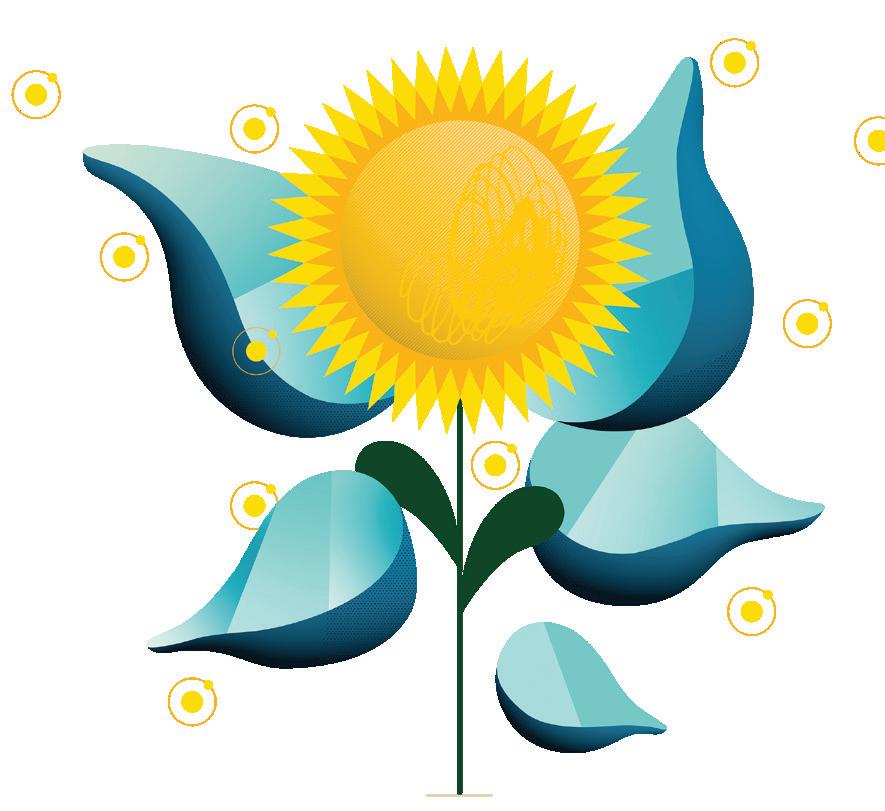
The Mohite lab and its collaborators created the device by turning their existing solar cell into a reactor. The challenge they had to overcome was that halide perovskite semiconductors are extremely unstable in water and the coatings used to insulate them ended up either disrupting their function or damaging them.
“Over the last two years, we’ve gone back and forth trying different materials and techniques,” says Michael Wong, a Rice chemical engineer and co-author on the study. After lengthy trials failed to yield the desired result, the researchers finally came across a winning solution.
“Our key insight was that you needed two layers to the barrier: one to block the






water and one to make good electrical contact between the perovskite layers and the protective layer,” Fehr says. The researchers showed that their barrier design worked for different reactions and with different semiconductors, making it applicable across many systems.
“With further improvements to stability and scale, this technology could open up the hydrogen economy and change the way humans make things from fossil fuel to solar fuel,” Fehr says.
— SILVIA CERNEA CLARK
Aditya Mohite is faculty director of the Rice Engineering Initiative for Energy Transition and Sustainability and associate professor of chemical and biomolecular engineering, electrical and computer engineering, and materials science and nanoengineering. Michael Wong is the Tina and Sunit Patel Professor in Molecular Nanotechnology; chair and professor of chemical and biomolecular engineering; and professor of chemistry, materials science and nanoengineering, and civil and environmental engineering.
ILLUSTRATION BY ALEX EBEN MEYER MAGAZINE.RICE.EDU 23
CLEAN ENERGY
ARCHIVAL IMPROVEMENTS
Maus in the House
PULITZER PRIZE recipient Art Spiegelman added a personal touch to his graphic novel “Maus” at Fondren Library in May, autographing a copy of the classic Holocaust narrative for the Woodson Research Center’s collection of vintage comics, which is curated by Associate Professor Christopher Sperandio and his students in the Comic Art Teaching and Study workshop.
“There’s a version of ‘Maus’ in the general collection, but his signature and the art he created is one of a kind,” says Rebecca Russell, archivist and special collections librarian at Fondren.
“It would make sense to display it with pieces from the comic art col-
lection,” adds Amanda Focke, Fondren’s head of special collections. “It’s evidence of his support for the program.”
“Maus,” published in the ’90s, grabbed renewed attention in 2022 when a Tennessee school board banned it from junior high classrooms. “Film, photography and the comics were born at the same time, and they all share this potential for linear storytelling,” Sperandio says. “Somehow the comics were the runts. They were considered trash and used as propaganda and never recovered. I’m working to help that recovery.
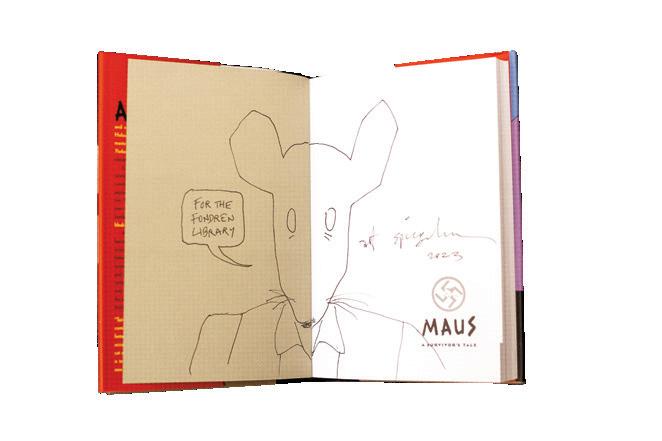

“I think that Spiegelman has been fighting, like all of us, to claim territory for the comic book as a sophisticated
medium of human expression. And the fight continues.”
Sperandio, himself a comic book artist, brought Spiegelman to his comic workshop at Sewall Hall while the author was in town for a Menil Collection event. While there, he also asked Spiegelman to autograph the specialized printer students use for their own works.
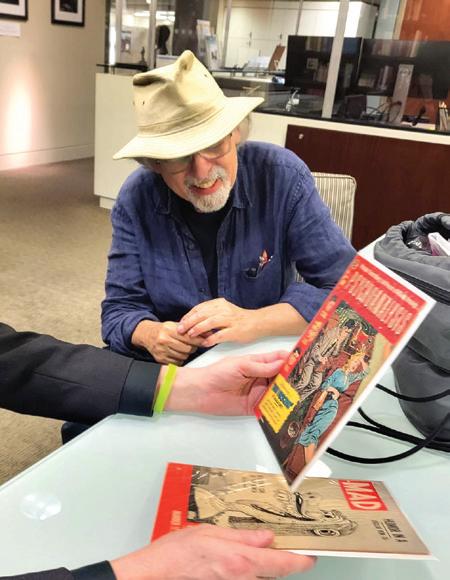
“I think it’s the only Pulitzer Prize-winnerautographed Risograph printer in the world,” he says. “Every time I stand at that machine with a student printing their comics, I show them the drawing and tell them about Art Spiegelman and the impact he’s had. It’s a great teaching moment.”
Fondren Library’s Woodson Research Center is moving to an archiving platform that will provide better functionality for its extensive digital cultural heritage materials. The new system will enable the Woodson to better showcase, share and celebrate their materials in intuitive ways.
“We expect there will be increased research use with the more visually engaging navigation and enhanced accessibility,” says Amanda Focke, head of special collections at Woodson. “For example, oral histories will have closed captioning in addition to full PDF transcripts, and page images of handwritten letters will have side-byside transcription.”
The archives are available for scholarly use by faculty, staff, administration, alumni and the general public, says Norie Guthrie, an archivist and special collections librarian. — ANDREW BELL
24 RICE MAGAZINE FALL 2023
FONDREN
— MIKE WILLIAMS
LIBRARY
When you give a graphic artist a pen …
SPIEGELMAN PHOTO BY CHRISTOPHER SPERANDIO; BOOK PHOTOS BY ZEISHA B.
not only a great university but also a great community, where I could work to have an impact, on a campus where I see familiar faces as I go about my day. I’ve found that community here.” We spoke to Dittmar in greater depth about her can-do approach in her first year at Rice.
Learning curves and building relationships
I spent 19 years at my last institution — seven in the provost’s office. Over that time, I developed strong relationships with leadership, deans, faculty and staff. I am a get-things-done person, and because I had these relationships, I understood what the university needed and knew how to do things there. That’s my management style — to listen, understand and then act — so I set out to quickly begin to build those relationships at Rice. And right away, I realized this community was open and welcoming.
Lunch and listen
TheDoer
INTERVIEW BY LYNN GOSNELL
ON AUG. 1, 2022, one month after Reginald DesRoches became Rice’s eighth president, we welcomed Amy Dittmar as our new provost — Rice’s chief academic officer and executive vice president and a key partner on the president’s leadership team. A distinguished scholar of economics and finance, Dittmar brings deep experience in university administration to Rice. She served as senior vice provost of academic and budgetary affairs, acting provost, and executive vice president for academic affairs at the University of Michigan, a top-ranked public university with more than 50,000 students and an annual budget of $11 billion.
At Rice, Dittmar works with deans, vice provosts, department chairs, faculty and others to support excellence in all the university’s academic, research, scholarly and creative programs and activities. “I wanted to come to

In my first year, I had a goal to visit every department, most of them during faculty meetings, often over lunch. I came without an agenda — just to listen. I would usually ask everybody three very open-ended questions:
1. What should I know about your department that I wouldn’t know if I looked at your website?
2. What do you love about Rice, aka what shouldn’t I mess up during this period of change?
3. What are the barriers getting in your way?
WISDOM ILLUSTRATIONS BY ADAM CRUFT MAGAZINE.RICE.EDU 25
Provost Amy Dittmar reflects on her first year at Rice — and what’s on the horizon.
IN HER OWN WORDS
And then it would just be a conversation — a way of hearing what was important from people and a way to get to know the culture of Rice. What we’re hearing from the people coming out of the strategic plan is not to mess up what makes Rice, Rice. We’ve heard that we need to preserve the feeling of being in a small community, because that’s who Rice is. [It’s] not a number of students — it’s more that small community feel. They feel known.
First steps: support for our graduate students
One of the first big decisions I made concerned supporting graduate students, doctoral students in particular. I have worked closely with graduate students, including overseeing their support. So, I could see we needed to establish standards, such as having a minimum stipend, so that all graduate students make at least a certain amount. That would be a raise for some students. That’s a first step in making sure that our graduate students are well supported on campus.
A faculty-hiring initiative for the books
We have a goal to hire 200 faculty across all schools over the next five years — it’s one of our largest initiatives — and we’ll create many cross-disciplinary connections through this hiring initiative. We hired 46 new tenure-track faculty last year, and they are in the process of joining Rice. We have 22 new benefits-eligible nontenure-track faculty, plus 15
more faculty teaching one or two courses each. As this year’s faculty budget was set by the prior administration, we expect to grow even more in the upcoming academic year. We will have more than 65 tenure-track searches in the next year. We’ve also had strong faculty retention, successfully retaining faculty with offers from many top schools. Growth in faculty will help us increase our excellence in research and teaching while maintaining our small community feel.
Overhauling an outdated family-leave policy
We should be one of the best places to work, but Rice’s family-leave policies seemed out of sync with where we should be and where the country is. There was a “primary caregiver” leave policy for tenure-track faculty, guaranteeing a full semester of paid leave, but not for our nontenure-track
faculty — nor for staff who are welcoming a new family member. Rice’s new policies allow staff to take up to six weeks of 100% paid leave after a child’s birth or adoption. And nontenure-track faculty can take between eight weeks and a full semester of 100% paid leave after a birth or adoption. As a working mom, I went through these challenges myself, so I really appreciate the significance of these changes.
Who does Rice want to be?
We launched a strategic planning process in January. This fall, I’m reconvening the groups guiding the plan and reviewing all the data that’s been collected. At a high level, this data shapes an answer to questions such as, “Who is Rice?” and “Who does Rice want to be?” Some themes are coming into focus — providing all undergraduates with the support to be successful, recruiting and
retaining the highest-quality graduate students, strengthening basic and translational research, and ensuring a positive work environment for faculty and staff. In addition to those core focus areas, we have identified ways Rice is uniquely positioned to leverage our expertise to contribute solutions to some of the world’s greatest challenges, including a sustainable environment, innovations in health, and thriving urban societies.
Data and decision making
Something that is important to me is having a data-driven decision-making culture. I have always appreciated data, and understanding how to interpret complex data is a core part of my research; data may not tell the whole story, but it gives you insight and, when shared, creates a culture of transparency and shared mission.
The key to time management
I would die without my many to-do lists. I use an app called Todoist. It’s on my phone and my laptop. If I’m sitting in a meeting and an issue comes up that I need to follow up on, I can just click and write it down. It’s based on different categories, which allows me to track the interrelated nature of projects. I tend to move pretty quickly, so part of my time management is my ability to pivot between topics and just keep going.
See an expanded version of this interview at magazine. rice.edu/dittmar.

WISDOM 26 RICE MAGAZINE FALL 2023
I would die without my many to-do lists. I use an app called Todoist. It’s on my phone and my laptop. If I’m sitting in a meeting and an issue comes up that I need to follow up on, I can just click and write it down.
Now Reading
The Ferryman
Justin Cronin Ballantine Books, 2023
PROCTOR BENNETT IS A GOVERNMENT
bureaucrat whose life, on the surface, seems perfect. Beautiful wife, nice house and an important job.
But there are ripples of discontent around Prospera, a peaceful, isolated island serviced by workers who leave its wealthy residents each evening to return to their own hardscrabble lives. Meanwhile, Prosperans enjoy all the benefits polite society has to offer. But when their time is up, they are renewed as teenagers, blank slates fresh for adoption.
That’s the premise of “The Ferryman,” Rice writer-inresidence Justin Cronin’s follow-up to his blockbuster “Passage” trilogy. Class warfare seems inevitable in this tightly controlled society where dreams are a threat and access to the outside world is forbidden. Bennett himself is the ferryman who facilitates the transfer of elders and others as their implants indicate it’s time for renewal on a third, mysterious island. Things spiral out of control when Bennett is assigned to put his own father on the boat to the “Nursery.” The contrast between the effete elite and the workaday rabble becomes sharper – and more consequential – when circumstances draw Bennett to investigate the other side. Cronin peels away layers of artifice to reveal the stunning truth to readers and characters alike, its relevance to today’s society clear and powerful. Don’t sleep on this one. —
 MIKE WILLIAMS
MIKE WILLIAMS
In the Company of Radical Women Writers
 Rosemary Hennessy University of Minnesota Press, 2023
Rosemary Hennessy University of Minnesota Press, 2023
WHEN COVID-19 shuttered businesses and educational institutions across the globe, work, schooling, child care and other essential duties moved back home — adding to the often invisible labors of daily homemaking. Beyond the virus, however, the world was fighting other vital battles: wage inequities, systemic racism, the curtailment of reproductive freedoms and environmental catastrophes. While in lockdown, L.H. Favrot Professor of Humanities Rosemary Hennessy couldn’t help but notice the startling parallels to life during and after the Great Depression — and the issues women faced then. “This is a book born from a world in crisis,” Hennessy writes, and she uses the very similarities between now and then to emphasize the importance of revisiting radical writers of the past.
In this highly readable volume, Hennessy “keeps company” with seven outspoken women writers from the early to mid-20th century: Marvel Cooke, Louise Thompson Patterson, Claudia Jones, Alice Childress, Josephine Herbst, Meridel Le Sueur and Muriel Rukeyser. She leverages these women’s words, as well as their highly captivating biographies, to explore the power of “social reproduction” or the unpaid labor outside the wage economy.
Even though Hennessy’s chosen writers came to prominence nearly a century ago, their thoughts and experiences will seem all too familiar to women navigating today’s fraught sociopolitical landscape. By highlighting the “persistent forces” with the power to drive inequities in labor, land and love in their published writings, Hennessy succeeds in her goal to use their words and actions to create a “primer for our time.” —
KAYT SUKEL
WISDOM MAGAZINE.RICE.EDU 27
FACULTY BOOKS
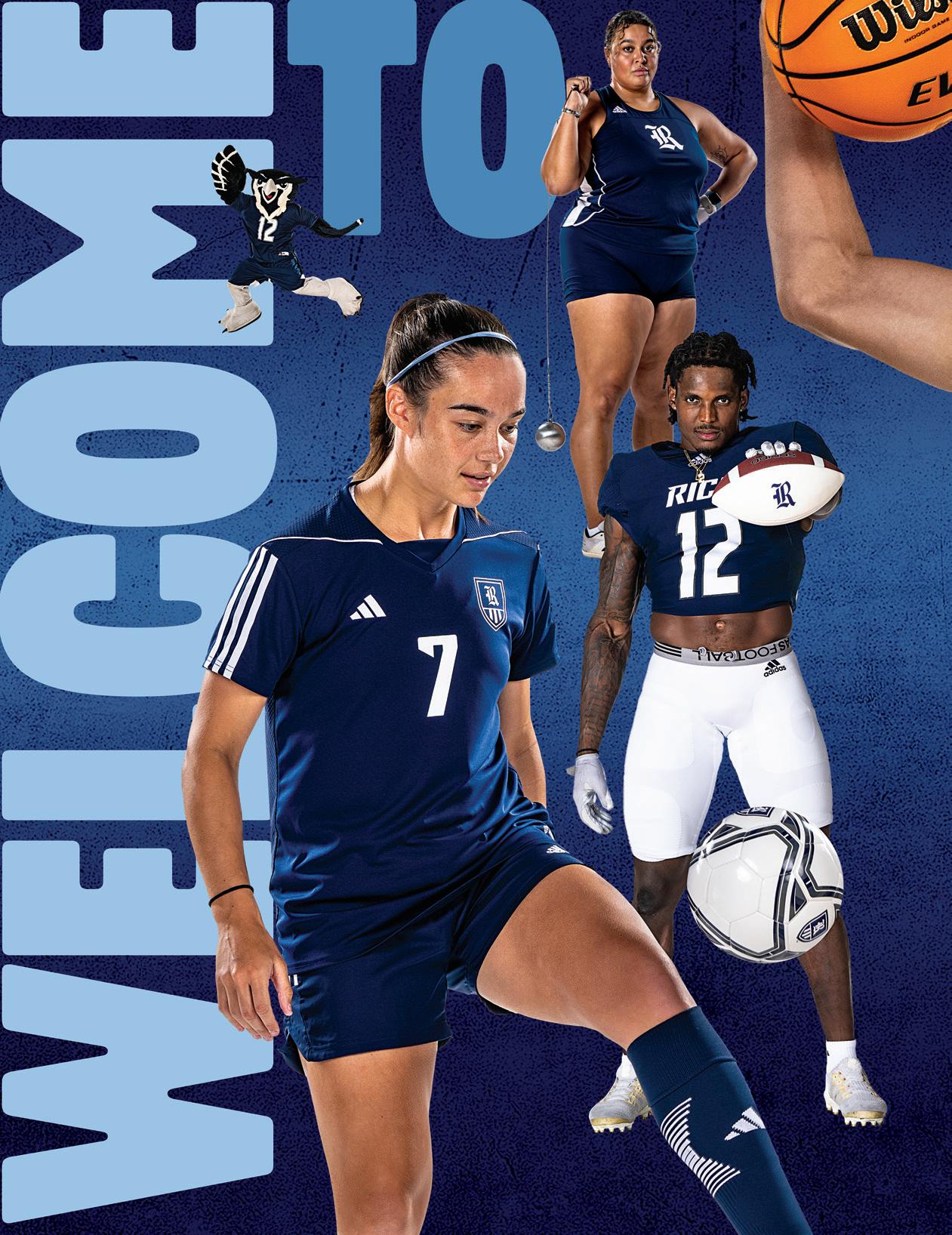 Tara SimpsonSullivan
Catarina Albuquerque
Josh Pearcy
Tara SimpsonSullivan
Catarina Albuquerque
Josh Pearcy
RICE OWLS JUMP INTO A NEW LEVEL OF CONFERENCE PLAY.
 BY ANDREW BELL
PHOTOS BY JEFF FITLOW
Keanu Dawes
BY ANDREW BELL
PHOTOS BY JEFF FITLOW
Keanu Dawes
JULY 1, 2023, MARKED THE OFFICIAL BEGINNING OF RICE’S move into the American Athletic Conference. While this date marks a significant milestone in the history of Rice Athletics, the effects of the transition had already been in play for months.
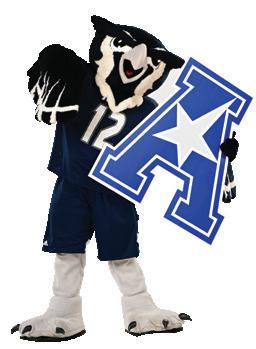
One of the best examples comes in the shape of versatile 6-foot-9 forward Keanu Dawes ’27, a four-star national recruit who committed to Rice hoops last year. Dawes is just as comfortable catching an alley-oop for a dunk as he is swishing a 3-pointer or rising to block an opponent’s shot into the stands.
At Stratford High School, located about 20 minutes from Rice’s campus, Dawes averaged 15.0 points, 7.0 rebounds and 6.0 assists per game and led his team to a 27-6 record and district championship last season. He was named District Offensive Player of the Year and took home all-state and all-region honors, in addition to twice being named a finalist for the Guy V. Lewis Award for the boys’ high school player of the year in the Greater Houston area.
A talent at this level, says Rice basketball head coach Scott Pera, may not have had Rice on his radar if not for the allure of the AAC. “I don’t know if we get Keanu Dawes here if we’re not in the American. I mean, you’re talking about a national top 100 recruit. Being a part of the American, he knew the exposure, the competition — all of it — would just be better. So, it’s already had a huge effect for us.”
The pull of the AAC was enough to get Dawes on campus for a visit, and once he arrived, the family atmosphere and camaraderie he felt with his future coaches and teammates sealed the deal, he says.
“When I came on my visit, it felt like I knew everyone already,” Dawes says. “I just felt comfortable with them, compared to some of the other visits I took. The second I stepped on campus, they treated me like family.”
Whether it be eye-popping, talented recruits like Dawes — or game-changing
Jtransfers like J.T. Daniels, a quarterback with a five-star pedigree, or Emilia Weske, a former USC Trojan and fouryear member of the German national team who will play for Rice volleyball this season — Rice coaches and administration believe the AAC is positioning Rice Athletics to attract new talent from previously untapped avenues around the country and the world.
National relevance
After 18 seasons in Conference USA, Rice’s switch to the American Athletic Conference brings opportunities for increased recognition and exposure, many of which stem from the AAC’s 12-year, $1 billion TV contract with ESPN. As a member of the American, Rice will see not only higher TV revenues but also an exponential jump in linear TV exposure, as a minimum of 40 AAC football games and 60 basketball games will be broadcast annually on ESPN’s primary networks. And nearly every AAC game or meet
in all sports will appear either on an ESPN network or on ESPN+, allowing family members and friends of Rice student athletes to tune in no matter where they are.
Former Director of Athletics Joe Karlgaard, who recently left Rice after leading the athletics program for a decade, was a driving factor in making the AAC a reality for the Owls. He says the accomplishment carries multiple benefits for student athletes and fans.
“‘National relevance’ is probably the first phrase that comes to mind, and it’s for a number of reasons,” Karlgaard says. “You’ve got some really good, well-known institutions within the league who’ve had pretty high levels of success in different sports. The TV contract is robust, and it’s not just about TV revenue. We think ticket revenues will be better, and we think sponsorship opportunities will be better, in part because we’re going to be on television more. It’s a win on a lot of different fronts.”
“I am grateful to Joe Karlgaard for his efforts in positioning Rice for entry to the AAC,” says Tommy McClelland, who joined Rice as vice president and director of athletics Aug. 14. “We are now poised to take the next step, and I am excited
Rice will see not only higher TV revenues but also an exponential jump in linear TV exposure, as a minimum of 40 AAC football games and 60 basketball games will be broadcast annually on ESPN’s primary networks.
to join forces with President DesRoches as we continue to elevate our athletic programs and position them for success.”
Of all the ways this national relevance benefits the university, the one factor coaches and staff bring up most often is recruiting. Marco Regalado, executive director of player personnel and recruiting innovation for Rice football, says that while the athletics staff has always been confident in promoting the Rice brand, the move adds an extra layer of benefits to pitch to recruits in an extremely competitive recruiting landscape.

“When we get guys on campus or when our coaches are on the road, it gives us a little bit more to sell and market our university. It’s definitely a plus,” he says.
The AAC will feature teams that have recently competed in the New Year’s Six bowl games, like Tulane University in last year’s Cotton Bowl victory over the University of Southern California, as well as the NCAA Final Four, where Florida Atlantic University’s men’s basketball team
was a buzzer beater away from making it to the national championship game in Houston just this April.
Being associated with teams like this on a weekly basis will only boost the national recognition of Rice Athletics, says Rice women’s cross-country and track and field coach Jim Bevan.
“I think, nationwide, when people look at the American, they’re seeing a different dynamic than we had in Conference USA,” says Bevan, who is entering his 38th season at Rice. Under Bevan’s tutelage while in the C-USA, the Owls were one of the league’s annual contenders for the team trophy and captured 13 team titles between cross-country, indoor and outdoor.
“[The American] is considered the best Group of Five conference historically, going back really to when it was founded,” Bevan says. “So, it’s a step in the right direction for us, in regard to who we are associated with and how we’re perceived nationally.”
31
Trinity Grear
Arielle Hayon
Parker Smith
Visibility for women’s sports
With the majority of Rice Athletics games being featured on ESPN or ESPN+ in some capacity, the AAC is likely to bring an increased level of visibility to Rice’s highly successful women’s programs.

Featuring a nationally ranked volleyball team coming off of an NCAA Tournament appearance, a soccer team that boasted a 9-0-1 conference record last season, and a basketball team that has won more than 20 games in six out of its last seven seasons, Rice’s women’s teams are eager to show the world their talents on a bigger stage.
“I think exposure is everything,” head volleyball coach Genny Volpe says. “Rice is a hidden gem that just not a lot of people outside of the local world understand. The more visibility we get through ESPN and our games being covered — I’m hoping that gets our story out more about the type of student athletes that we have on our team, because there are some special stories within each program.”
The volleyball program likely enters the AAC as a serious contender from the jump, which could go a long way toward demonstrating the strength of Rice’s women’s sports nationally.
“Coach Volpe has built that program into a consistent and sustainable winner,” Karlgaard says. “We feel like we can come in and make our mark right away, and I think the platform that the American affords us will help us showcase just how great a program we have.”
For some players, the lack of national attention toward women’s sports at Rice in past years has been a motivating factor, senior volleyball player Nia McCardell explains. Through the American, she hopes her and her teammates’ motivation will come to fruition.
“We’re super excited to get some more exposure and get more people noticing Rice, because I think a lot of times we don’t get the recognition we deserve,” says McCardell, who was Conference USA Libero of the Year and First Team All-Conference USA in 2022. “We are breaking down barriers, and we’re beating high-level teams. We all know what we’re capable of. Especially here at Rice, women’s sports are always at the top of their league.”
Whether it’s volleyball, soccer, swimming or basketball, Rice’s women’s teams share a special bond that contributes to their continued success, says women’s basketball coach Lindsay Edmonds. “Our players just really love Rice,” she
32
says. “They’re here for two reasons: to compete at a high level and get a fantastic degree. They really just love to see how well the women’s sports are doing and thriving and continuing to make the world know about Rice women’s sports. I think they truly care about that.”
Stepped-up competition
As revenues and the number of eyeballs increase, so does the level of competition. And in the AAC, there will be no shortage of formidable opponents to face on a weekly basis, says Rice head football coach Mike Bloomgren.
“The league is absolutely outstanding,” he says. “It’s going to be dogfights week in and week out, so I think that part is going to be a lot of fun. I’m sure glad that our program has been built to a place where I think we’re ready to step in.”
While the transition from Conference USA provides a step up in level of play, it also brings more opportunities in the form of postseason action, as the AAC has notably produced multiple teams in NCAA Tournaments on an annual basis.
“That, as much as anything, is really important, because if the American can stay a three-bid league — or maybe a four-bid on a really good year — you don’t have to win all those games in March just to make the tournament,” Pera says. “Everybody wants to do that, of course, and that’s always the goal. But now it gives you the position where if you do well in the preseason, you win some big games in your league and you have a 21-win type of year and a shot to get in that thing.”
Back to the students
From the players’ perspective, the challenge of being a high-level student at Rice while competing with some of the most talented teams in the country is a tall task, but one they’re built for, says Rice linebacker Josh Pearcy ’23.
“It’s not often you’re asked to compete with some of the smartest students in the world and still compete with some of the best athletes in the world,” says Pearcy, a fifth-year team captain and 2023 C-USA Commissioner’s Honor Roll member who began an MBA program this fall. “Having that expectation is definitely a challenge, but we go to Rice because we’re up for that challenge, and we go to Rice because we embrace that challenge.”
The move to the American solidifies Rice as a university that no one can say doesn’t take athletics seriously enough, Bloomgren says.
“The thing that I ran into here that I probably wasn’t prepared for is the people who would say, ‘You know what,
I want elite academics, but I want to play better ball than y’all are playing,’” he says. “And now nobody can say that. We really are playing on a big stage, and we still have academics that speak for themselves.”
Rice Owls’ New Leader


At a press conference Aug. 15, Rice welcomed Tommy McClelland as the school’s new vice president and director of athletics. “I’ve spent nearly two decades preparing for this moment, and I’m excited to get started,” McClelland said at the event. “My family and I have received such a warm welcome, and we’re so excited to come to Houston and to join the Rice family.”
McClelland spoke about what the Rice community can expect from its athletics programs moving forward. “Our student athletes will be the center of decision making,” he said. “They deserve a worldclass experience and the opportunity to compete for championships. We will build them into champions that learn how to compete in their sport, compete in the classroom and compete in life. We will win with honesty and integrity, and we will not compromise our values. We will do our part to advance the mission and the integrity of Rice University.”
Rice’s sports programs provide the widest lens through which people get to view the global impact that is happening at Rice, McClelland said. “When one area of the university wins, we all win.” He added, referencing Rice’s admission to the AAC, “Rice Athletics is well positioned for the future and has an amazing opportunity standing right in front of it.”
33

To Serve Is To Live
Three decades after she first raised three fingers on her right hand and recited the Girl Scout Promise, Noorain Khan ’06 is now the highest-ranking volunteer in the organization that counts more than 50 million American women among its alumnae.
In July, Khan was elected national board president for a three-year term, becoming the first millennial and the first Muslim American to hold the post since Juliette Gordon Low founded Girl Scouts in 1912.
The native Michigander’s professional accolades are as impressive as a sash full of badges. The first-generation American is a Rhodes scholar, a graduate of Yale Law School and a White House veteran, serving on the National Economic Council under President Joe Biden. A National Gold Award Girl Scout — the organization’s highest honor — she has worked since 2015 at the Ford Foundation, where she oversees discretionary grantmaking and helped launch a historic $1 billion social bond offering that supported organizations fighting COVID-19 and systemic racism amid a time of unprecedented uncertainty.
The common thread running through Khan’s life and career is the courage, confidence and character she developed as a Brownie in Troop 369 in Grand Rapids.
“Girl Scouts built my confidence, connected me to my community and gave me opportunity after opportunity to develop my leadership skills,” she says. “As much as those experiences meant to me then, I would never have imagined they were starting me on a path that would lead to this moment.”
Khan spoke with Rice Magazine about her change-making work at the Ford Foundation, her lifelong involvement with Girl Scouts — the largest woman-led organization in the world — and how others can begin to practice philanthropy in their own lives.
What does your new position with Girl Scouts entail, and what are your goals for your three-year term?
By Adrienne Frank
Photos by Michael Nagin
Girl Scouts shaped every part of my life growing up; other than my faith and my family, it was the single most profound influence in terms of introducing so many different caring adults into my life. From my troop leader to staff on my council to folks I interacted with later at the national level, there was a continuous throughline of people who were invested in me and told me I can do things, I should try things, I should go for it. So,
35
On her honor, Noorain Khan will try to help people at all times and to live by the Girl Scout Law.
the opportunity to serve our movement as the chief volunteer is the privilege of a lifetime.
To me, our values — civic-mindedness, character, courage — are what our world needs. I’m also looking at what girls need in this moment when [it comes to] mental health, the epidemic of loneliness and the lack of community. I think we marry those two things: what girls need and what the world needs. We have about 1.7 million Girl Scouts. Almost one in three American women were Girl Scouts at some point. We need to continue to grow as a movement and make sure that all girls feel like they belong.
And then we need to do all the business things to ensure we are a flourishing movement: investing in technology, continuing to root our program in the very best research, and thinking about new volunteer models and the ways in which we can support them.
Our 30-member Girl Scouts of the USA National Board oversees finance, legal and operations at the governance level. We have an incredible team at the table. Forty percent of the members that were elected this triennium are new to the board. They are the best in their field across the country, rooted in values and united to serve the movement. I want a high-performing board that is an example of the very best of what happens when women lead.
Your daughter is going to be a Daisy while you’re national board president. How will that inform your work, and in what ways will her experience with Girl Scouts be similar to yours?
To this day, my nine years of board service are predicated on my interest in our mission and my own Girl Scout experience. To have this coincide with being a parent and an adult volunteer in the movement — it’s a different level of responsibility that I’m so excited about.
[Scouting helps you discover] who you are, how you present to the world, how you care for others, how you care for yourself. That’s a new narrative, actually. I think society has always told girls to care for others and think about everyone else — but what does it mean to care for oneself? We’re giving girls the tools to care for themselves.
We have to ask: What’s your favorite Girl Scout cookie?
I’m a Trefoils/Shortbread girl.
You just marked your eighth anniversary at the Ford Foundation. What does your work as director of the Office of the President include? It is the best job I’ve ever had, that marries so much of what I care about in the world — social justice values, the fight against inequality — with a workplace where I can flourish alongside a great community of colleagues, funder colleagues and grantees. And my boss, President Darren Walker, is such an example to me in every way as a leader, as someone who cares, who builds, who does hard things.
I run our discretionary fund — Ford’s largest — for urgent, emergent needs and historic foundation relationships. It’s also a searchlight and R&D function for new ideas and a really important way to respond to critical moments, whether it’s the murder of George Floyd, the COVID pandemic or the Flint water crisis. There have been so many things that arise that you can’t budget around, but if your mandate is [to fight] inequality and you’re a social justice foundation, you need to find a way to support, elevate and respond to things.
I also want to mention the bond offering we did against our endowment in 2020. We had an extra $1 billion to spend, knowing that there was so much uncertainty in the world at that point. Many of our grantees were thinking about shuttering their doors or doing layoffs; they were grappling with a new reality that none of us were prepared for.
It sounds like you’re in a fortunate position at Ford — to not only have the money to invest but to be able to respond quickly. Why is that so important to your work ?
It’s critical. In philanthropy, there are debates about

36
being data driven, being strategic, being research based. On one hand, that slows things down, and you want to be intentional and thoughtful. But if you over-index on that or you don’t plan for something more nimble or some set of resources that can be responsive, you can get caught [flat-footed]. It’s really about calibration, walking the line, making the hard choices and being deliberate.
Part of your work at Ford focused on disability inclusion. Tell us more.
Early on, when we announced our fight against inequality as our main strategy, we heard from a lot of disability rights activists. [We had] identified drivers of inequality that include persistent prejudice and discrimination, but we didn’t say anything about people with disabilities, visible and invisible, which represent a significant part of the global population.
[We decided] to make a couple of grants to learn about the space and see what we [could] do. And within two or three years, we became the largest private funder of disability [programs] in the world. My team incubated a pooled fund — now at Borealis Philanthropy — representing dozens of foundations that invest in disability in a collaborative way. The thing I am so proud of is that it has a participatory governance structure. The disability community’s mantra is “Nothing about us without us.” It’s not a bunch of funders deciding where the money goes. It’s funders and disability rights activists at the table sharing the power of determining where that money goes.
How can organizations foster a culture of disability inclusion?
We can and need to as a society hire more people with disabilities in all roles, not just roles that relate to disability. The stigma that the community experiences, the ways in which the workplace navigates disability, can be shameful and toxic. We also have to allocate resources to it. [Employers] want to take shortcuts; they want the quick fix that will appease people. They don’t recognize that their workplace will be stronger by having [employees with disabilities] and that the investment on the front end will have so many benefits for their work later.
And I’m not just talking about working at a social justice foundation. I’m talking about a private company, an academic institution, a factory. I’m talking about all workplaces. The employment barriers are profound. If you have almost 20% of the popula-
tion that identifies as disabled, what are you missing out on in terms of talent?
I’m still on my own journey, and I want to be the best ally and advocate. I have personally, as a Muslim woman and daughter of South Asian immigrants, benefited from other people who decided, “No ban, no wall.” People have decided to take up as their personal causes things that impact me. And I thank them. I think we should all be champions for one another.
One of the common threads throughout your career and your life is service. Why is that so important to you?
Societally, we’re at a point of inflection where people aren’t choosing community — the greater good — over themselves. I think the “we” and the “I” are in deep misalignment today. And inequality is increasing. Being a parent, I think about all the things I’m able to provide my child. Every child should have caring adults in their life, nutritious food, and the opportunity to learn, read, flourish, have imagination and have fun. That’s the baseline. I’ve always thought that, but it’s made much more real as I weigh the wonderful suite of things that I can provide my child.
I think of the quote from iconic Girl Scout leader Frances Hesselbein: “To serve is to live.” That’s really it. [Service] means standing up for people who may not have as much of a voice. It means bringing in people from the periphery. It means respecting difference. It means loving people. To serve is to live.
I’ve cobbled together a life — between volunteer service, Girl Scouts, faith and community organizations — that mirrors a lot of Ford’s values related to social justice, culture and impact. It’s a full life, but it isn’t solely defined by the job, even though the job has opened so many doors for me. A full life means friends, family. It means hard times. It means doing challenging things. I think I’ve landed on what feels right to me.
How can people begin to practice philanthropy in their own lives?
Small amounts of money are a great place to start. It’s intimidating when you see the wealth disparities in our society today. It’s easy to say, “It doesn’t matter.” But a small amount can be so meaningful. And it doesn’t even have to be money. We all have different parts to play at different times in coming together in more and deeper ways.
The surgeon general this year came out with a devastating report on loneliness in our society. You can throw money at that, or you can call your neighbor. You can drop off food. It’s human contact that allows us to flourish and be seen and laugh together.
Just build it into your daily life. It’s fair to say that once you start practicing service, whether talking to your neighbor or donating books to the library, it becomes ingrained. It becomes who you are. You don’t want to be the person who does it because it makes you feel good — but, gosh, it makes you feel good.
37
I think we should all be champions for one another.
How Our Garden Grows
Abundant vegetables, herbs and native plants provide on-site learning opportunities and a bounty of food for the Rice community.
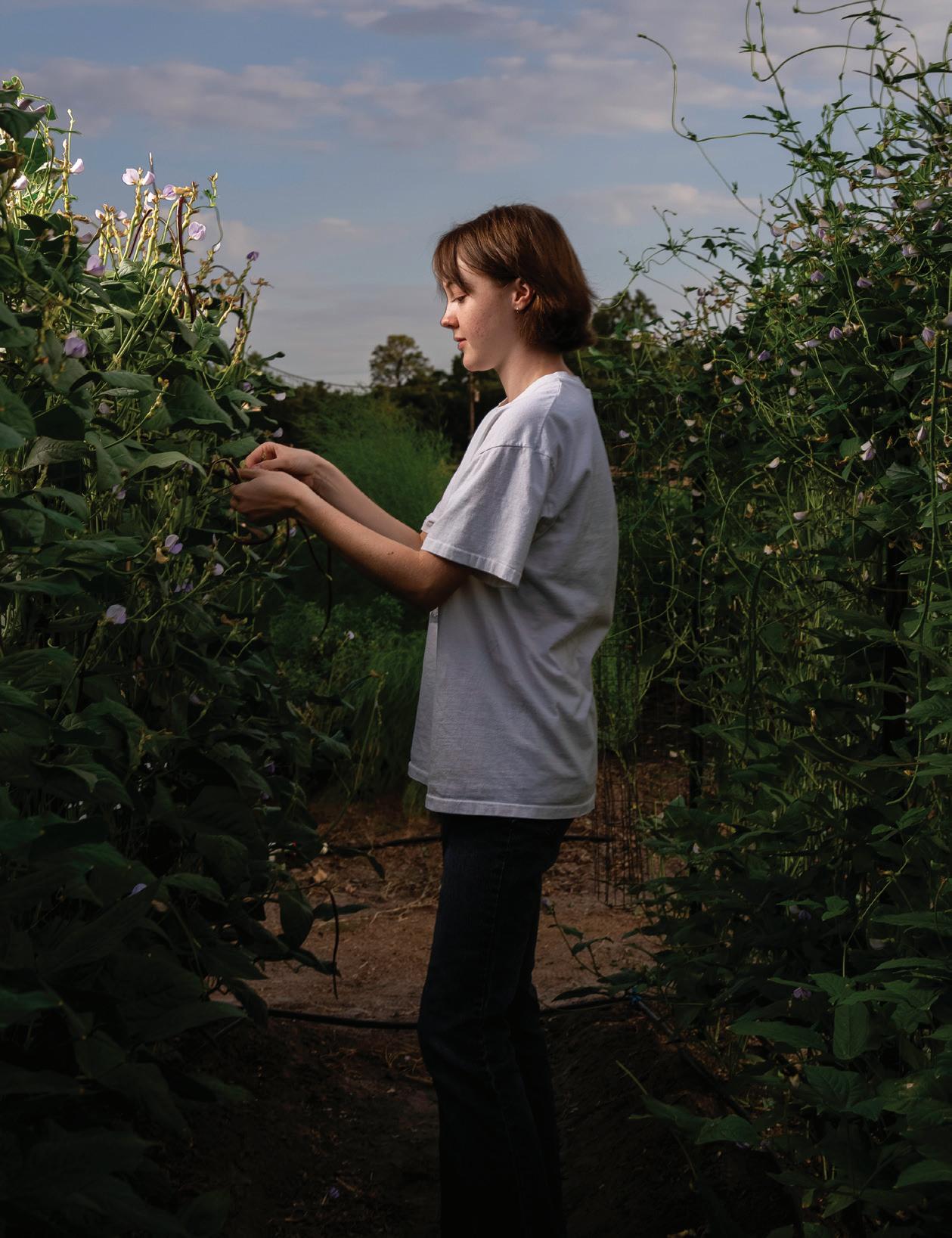 BY AUTUMN HORNE ’22
PHOTOS BY GUSTAVO RASKOSKY
BY AUTUMN HORNE ’22
PHOTOS BY GUSTAVO RASKOSKY
eats.
Next, the garden’s summer interns share updates on their research projects. One of the interns is Karis Williams, a sophomore interested in how native plants are incorporated into the garden. Williams can often be found working in the garden’s songbird habitat or beneficial insects garden, both a wild riot of colorful native plants. For her summer project, Williams is developing a system to harvest seeds from native plants, propagate them and then sell them through the garden’s market. People in the surrounding community will buy the plants for their own gardens, supporting native insects and animals in the process.
Junior Haaniya Mehrani, also a summer intern, wants to use the garden to educate the community on how to grow and prepare seasonal produce. Many gardeners don’t realize that because of Houston’s long warm season, they should be growing tropical greens six months out of the year. Tropical greens are not familiar to many Houstonians, but they’re nutritious, easy to grow and versatile to cook with. Mehrani helps cultivate lush beds of purslane, amaranth and water spinach, all well adapted to the heat of a Houston summer, and she educates locals on how to prepare them.
For students like Williams and Mehrani, the Friedman Holistic Garden is an experiential learning classroom like no other, but it is far more than that. Since its founding five years ago, the garden has provided valuable learning opportunities while also contributing to the health and wellness of the Rice community. The garden may have taken root as part of Rice’s Department of BioSciences, but those roots now spread far and wide across campus — into lecture halls, servery kitchens and even an art gallery.
SEEDING AN IDEA
In 2018, Novak and Janet Braam, then chair of Rice’s Department of BioSciences, received a grant from the Houston Jewish Community Foundation for a project to improve the health of Rice’s students. The Betty and Jacob Friedman Holistic Garden was born and soon expanded courtesy of a grant from the Green Mountain Energy Sun Club. In 2022, the garden was moved into its current location adjacent to the Gibbs Recreation and Wellness Center.
Covering just over one-third of an acre, it includes beds for fruits, vegetables and herbs, plus a greenhouse, outdoor kitchen, composting system, butterfly garden and apiary. The garden also contains a chicken coop for the uncontested stars of the garden, an unruly menagerie of chickens with names like Frizzle and Grommet.
The garden develops under the care of Novak, widely considered one of Texas’ leading horticulture experts, providing him the space to educate Rice students about urban agriculture and community gardening. Each semester, Novak teaches a course called Environmental Sustainability: The Design and Practice of Community Agriculture. When asked what students learn in his course, Novak sums it up by saying, “There’s an art and a science to gardening. We want to get the science in there as well as the art.”
Whichever their focus, students can expect to get their hands dirty. In Novak’s course, you don’t just memorize which pests attack which crops. Instead, you squat in the soil to determine whether the holes in the amaranth were caused by worms or beetles before you choose an appropriate control strategy. You don’t just read reports on how fresh vegetables are more nutritious than their processed counterparts. You pick your own vegetables, gather eggs from the chicken house, and learn to prepare a frittata in the garden’s outdoor kitchen. Rice bioscientist
O
On a scorching July afternoon, student workers, staff and interns for Rice’s Betty and Jacob Friedman Holistic Garden gather around an outdoor table for their weekly “snack and share.” The meeting convenes as horticulturist Joe Novak, the garden’s founder and director, passes around dripping slices of melon. Juice running down his hands and off his wrists, he explains how recent patterns of heat and rain have shaped the flavor of the fruit everyone
39
Left: Sophomore and holistic garden intern Claire Morton picks long beans.
George Phillips ’74, ’76 helps teach this cooking lab every semester. He quips, “You’ve heard about farm to table. This is just a farm table.”
CURIOSITY IN BLOOM
From the Department of BioSciences to the Department of English, many other courses deliver hands-on learning experiences in the garden. This summer, bioscientist Jamie Catanese ’05 and students in the Rice Emerging Scholars Program started a research project to solve a problem that affects gardens and farms worldwide: black rot, a destructive bacterial disease that infects vegetables like cabbage, broccoli, cauliflower, kale and kohlrabi. The most common management strategy is to till infected soil and wait for the bad bacteria to die off. The question is: How long should you wait?
Catanese and his students worked to develop a simple protocol for identifying whether bacteria that cause black rot are still present in soil. “I’ve always told them,” Catanese says, “we let the data drive it. We don’t have preconceived notions here. I don’t know the answer.”
Above: Joe Novak, founder and director of the Friedman Holistic Garden and a faculty lecturer at Rice, is one of Texas’ leading horticultural experts. Novak cares for and presents the garden’s educational programs. “There’s an art and a science to gardening. We want to get the science in there as well as the art.”
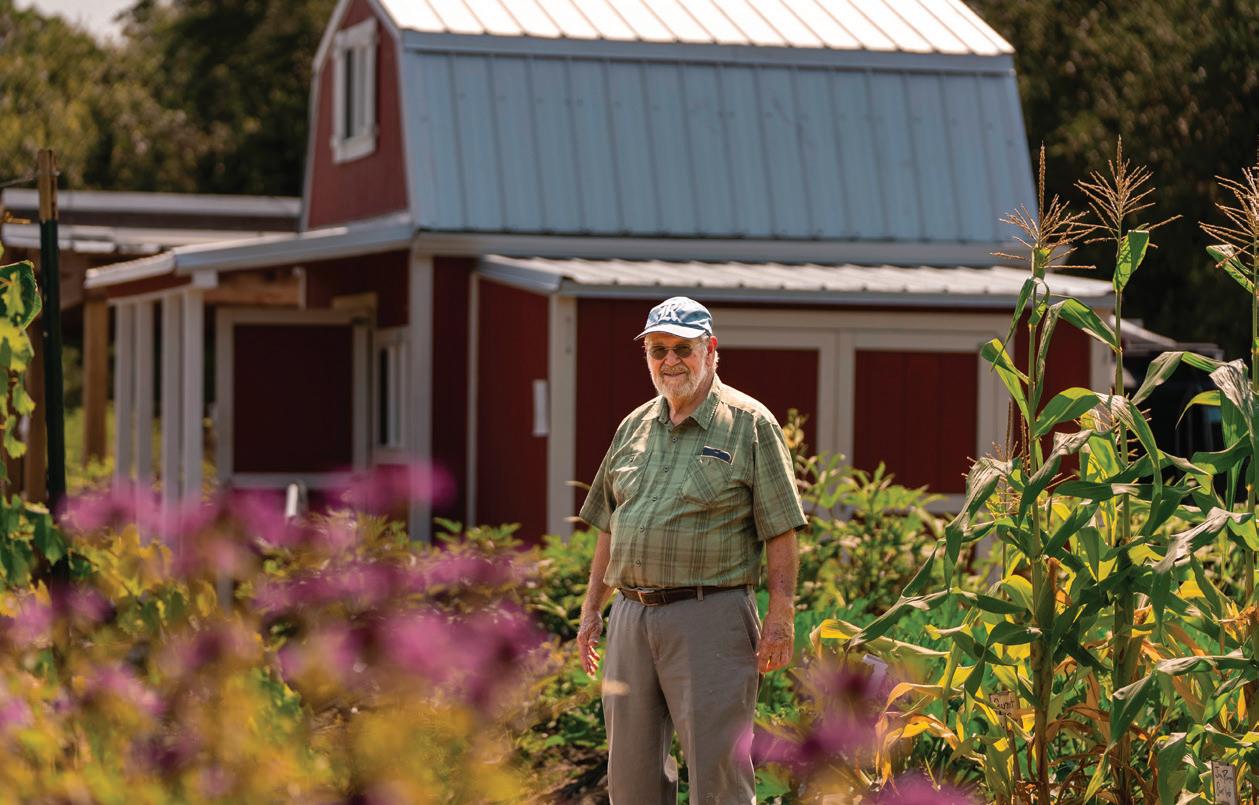
Right, clockwise from top left: Bioscientist George Phillips helps teach cooking classes in the garden’s kitchen; an aerial view of the garden; crop manager Charles Flynn inspects seedlings for weeds alongside intern Suraj Chandramouli, a senior; a cayenne pepper, one of three varieties in the garden, is ready for harvest.
To find the answer for themselves, students visited the garden to learn about black rot’s impact and management. Then, with samples from both infected and uninfected soil, they tested different methods for bursting open bad bacteria to release their DNA. They learned a technique called polymerase chain reaction to exponentially increase the amount of DNA in their samples, then sequenced the DNA to determine if bacteria causing black rot were still in the soil. The students may not have ended their summer with a definitive conclusion to send back to the garden, but, as Catanese assures them, sometimes that’s just how research goes.
CULTIVATING WELLNESS
The original mission of the Friedman Holistic Garden was to improve Rice students’ health by growing fresh produce for the campus serveries. Each month, the garden delivers over 300 pounds of seasonal produce to Rice’s chefs. Garden staff and volunteers harvest produce such as melons, tomatoes and eggplant at the peak of ripeness. The high-quality, nutritious
40


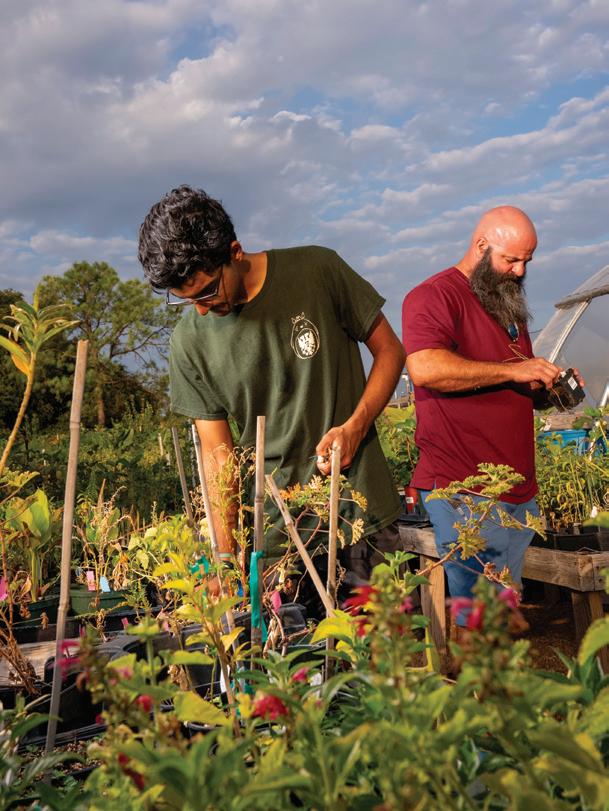

ingredients are then prepared in dishes and served to students the very same day.
Rice’s chefs can also use the garden to grow exotic herbs and vegetables that aren’t typically available from their grocery suppliers. As the serveries become more internationally inspired, access to these ingredients makes dishes not only healthier but also more authentic.
The garden’s crop manager, Charles Flynn, will be the first to tell you that gardens improve more than just your physical health. Toweling the sweat off his face, Flynn describes how farming helps him cope with trauma from 10 years in the military. He began farming a little over a year ago while working as a data scientist. A company he wanted to work with preferred applicants with agricultural experience, and Flynn hoped farming would give him a competitive edge. As he spent time in the garden, he picked up skills in seeding, soil maintenance and pest management, but he also noticed his symptoms of PTSD easing.
That being in nature has profound effects on mental and emotional well-being doesn’t surprise Novak. He coined the term “sociohorticulture” to describe the social applications of agriculture. For years, Novak has been teaching students how farms and gardens can be therapeutic and provide innovative solutions to poverty, hunger and homelessness. But for Flynn, sociohorticulture is more than an idea. He left data science
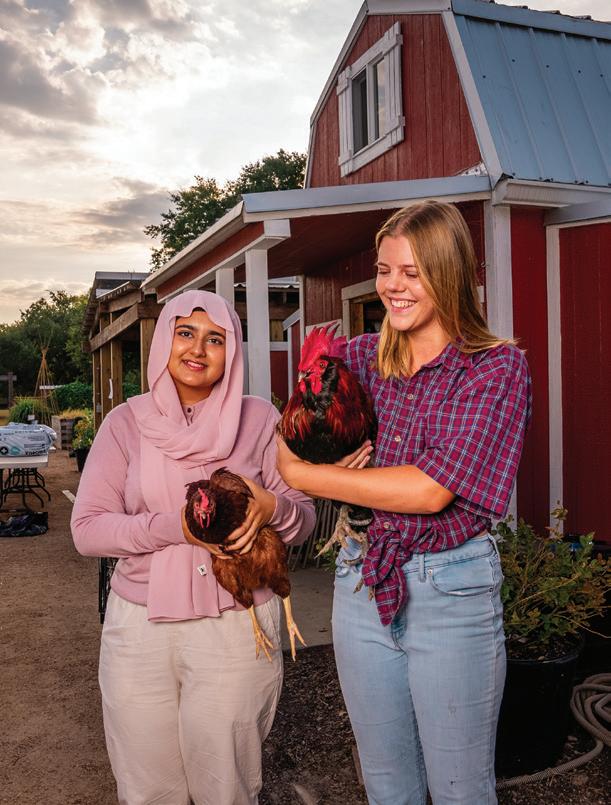
and never went back. These days, he spends most of his time in the garden, participating in its rhythms of growth and renewal. “Seeing these little lives grow and then pass, there’s no violence, there’s no anger, no raw emotions. Just simple life,” Flynn explains. “For folks who’ve had challenges in their lives, when there’s been a lot of trauma, a lot of violence, that’s simple. That’s beauty.”
A HARVEST OF STORIES
Much like its plants, the Friedman Holistic Garden is in a constant state of growth. Over the past year, the garden has explored creative and unexpected collaborations. In perhaps the most notable example, artist Bennie Flores Ansell, along with Rice students and the Moody Center for the Arts, worked with the garden to elevate stories of migration and explore how they might literally and figuratively create the ground we all stand on.
Over the spring semester, visitors to the Moody Center were invited to write or draw their stories of migration on compostable paper. On April 22, Earth Day, students migrated the stories in a procession from the Moody Center to the garden, where the papers and their stories were incorporated into compost. The stories will disintegrate until this fall, when people will return and use that same compost to nourish new plants. The folks at the garden hope more events like this one will bring the community together in a space for education and connection.
People who volunteer to pull weeds, learn from Novak, grab fresh produce from the communal fridge, or sweat through a harvest with Flynn rarely keep the experience to themselves — and for good reason. The ability to step out of the busyness of campus and into the Friedman Holistic Garden is a chance to cultivate our curiosity and care for ourselves as we also care for something, or someone, else. “We don’t want people to just ride by,” Flynn likes to say. “We want them to come in.”
George N. Phillips Jr. is Ralph and Dorothy Looney Professor of BioSciences, associate dean for research, and professor of chemistry.
Jamie Catanese is assistant teaching professor of biosciences.
Janet Braam is Wiess Professor of BioSciences and associate dean for strategic initiatives.
42
Left: Intern Haaniya Mehrani, a junior, holds New Baby, one of the resident hens, and intern Karis Williams, a sophomore, holds the rooster, Big Red.
ENERGY
ALUMNI Change Agent
Energy executive
Tomeka McLeod is chasing the next big energy revolution.
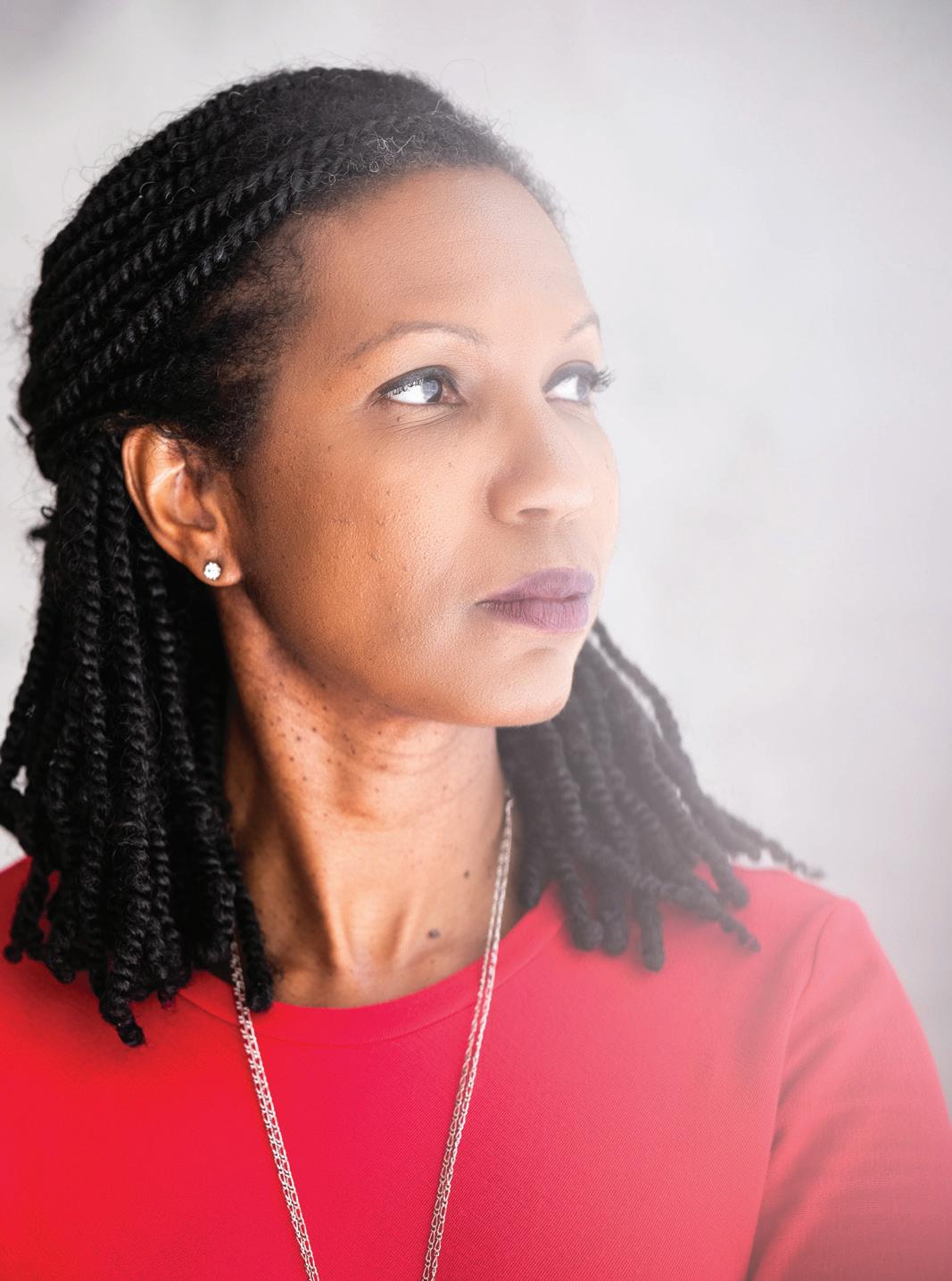 BY LAURA FURR MERICAS
BY LAURA FURR MERICAS
MAGAZINE.RICE.EDU 43 PROFILES, HISTORY AND CLASSNOTES
PHOTOS BY JEFF FITLOW
VICE PRESIDENT of BP’s U.S. hydrogen business Tomeka McLeod ’95 has the task of helping the company rapidly scale up its production of low-carbon hydrogen, which many experts view as essential to addressing climate change. The International Energy Agency notes that hydrogen could play a key role in transitioning to a cleaner energy system, because it is light, storable and dense with energy and produces no greenhouse gases directly.

“It’s an element that can help the world achieve net zero emissions faster,” McLeod says. “We’re excited about its potential to decarbonize our refining operations and parts of the economy where full electrification is technically or economically unfeasible.” It sounds simple enough, but scaling up the production and use of hydrogen involves many challenges, including financial, technological and governmental.
For McLeod, whose 17-year career at BP has included finance, commercial, leadership and advisory positions, a big part of her new executive role is to tackle those challenges. We sat down with her to discuss her career and the realities of hydrogen in today’s evolving energy market.
How did you get into working in hydrogen?
When BP reorganized [around 2020], I was asked to help set up the business
that I’m in now, which is called Gas and Low Carbon Energy. I was asked to be the chief of staff for the executive vice president who was leading that sector. I have seen this part of BP grow as we made decisions about getting into offshore wind, growing our solar power projects and scaling up hydrogen. When it was time for me to move on from that position, I said, “You know, I have to stay in this business.” I felt that this is where I could really have impact.
How does hydrogen compare to other options for lower-carbon energy?
I think all of the potential options that we have to decarbonize are critically important. Electrification is super important. Biofuels are going to be really important, as well.
We think there’s going to be quite a bit of demand [for clean hydrogen] in the U.S. because [it] will be able to decarbonize a number of industrial
44 RICE MAGAZINE FALL 2023
We’re excited about [hydrogen’s] potential to decarbonize our refining operations and parts of the economy where full electrification is technically or economically unfeasible.
ALUMNI
applications, like oil and gas refining. Hydrogen is really important for ammonia, so we start thinking about [how hydrogen can be used to create] fertilizer. There are big opportunities in marine, aviation, steel, heavy-duty transportation, power and other industrial applications where it would be really hard to electrify, because it’s too costly or just doesn’t make sense technically.
What needs to happen for hydrogen to take off?
In the near term, the technology to produce clean hydrogen is pretty much there. But long term, the production cost has to come down significantly. The current cost for electrolyzers, which produce hydrogen from water, does not support the industry getting off the ground. The U.S. government has laid out a target that by 2030 the cost of production for a kilogram of hydrogen should be $1, and the current cost of hydrogen production is many times higher than that.
There are so many different technological players who come to me all the time and say, “We have a novel way of producing ‘green’ hydrogen, which does not include an electrolyzer.” Or, “We can produce an e-fuel [a synthetic fuel generated with electricity] using hydrogen to provide fuel for the shipping industry.” We’re really going to need some of those technologies to take off in order for the industry to get to the scale that we’re talking about. We are definitely going to need to see some innovation.
See magazine.rice.edu/hydrogen for an extended version of this interview.
HOMECOMING
No Place Like Rice
WHEN OWLS FLOCK to campus Nov. 3–4 for homecoming, they will be in for a weekend that will include not only class reunions but also activities like faculty workshops, tailgates, alumni author sessions and an inaugural all-alumni event.

During 2020–2022, the Office of Alumni Relations combined Families Weekend and Homecoming & Reunion, offering a virtual gathering in 2020, a hybrid version in 2021 and an in-person version in 2022. This year, the two signature events will be separate — and no virtual components are planned. “We strategically shifted the official name this year to Alumni Weekend (Homecoming & Reunion) to better embrace non-reunion alumni participants,” says April Cole, director of alumni programs and purveyor of the weekend’s events.
Alumni celebrating reunions will mark the occasion with dinners and luncheons, but non-reunion alumni will have a full schedule of events to choose from as well. “There’s something for everyone on the program,” Cole says. “It’s truly a weekend to gather all alumni, and we want the nomenclature to reflect that.”
An Alumni Weekend Community Market will debut Saturday morning before the alumni tailgate and family fest. The market, featuring Rice
alumni-owned businesses, will be held outside. Participants will be selling specialty products and promoting their services, including kids’ art classes, bakery treats for dogs, cooking classes, and, of course, beverages and food.
The homecoming football game against Southern Methodist University will be extra exciting as Rice begins its first year in the American Athletic Conference.
“We’ve worked hard this year to connect with campus partners and provide avenues for widespread campus involvement,” Cole says. “In the coming years, I hope to see that involvement continue to grow and for departments and offices to participate in some exciting way.” With 10 months of advance planning, Alumni Weekend is sure to be a hoot.
— TRACEY RHOADES
To learn more about Alumni Weekend, visit alumni.rice.edu/ alumni-weekend.
ALUMNI MAGAZINE.RICE.EDU 45
In the near term, the technology to produce clean hydrogen is pretty much there. But long term, the production cost has to come down significantly.
Owls are invited back to campus for an in-person gathering.
CAREERS
Science in Public Service
In the halls of Congress, Melody Tan works for a healthier and more equitable future.
MELODY TAN ’14, ’21 remembers when she realized that she wanted to work on Capitol Hill — and that she might actually be able to do it.

It was 2019, and Tan was in Washington, D.C., working on health care policy at the National Academies of Sciences, Engineering and Medicine. “It was the first time I got to dive deep into the policy ecosystem,” she says. “And it really showed me how nonlinear policy careers are.”
That adjective certainly applies to Tan’s own career. She’s now the
senior policy adviser to a Democratic congresswoman from Virginia with a portfolio that includes health, energy, climate and the environment — and anything that comes before the House Science, Space and Technology Committee, which oversees more than $42 billion in federal research and development funding and holds hearings on topics ranging from artificial intelligence to quantum computing. “I didn’t come to Congress intending to work on science issues,” Tan says. “But that is where life took me.”
Growing up in Texas, Tan started college wanting to become a doctor. At Rice, however, she discovered that she preferred engineering classes to premed ones and decided to pursue bioengineering. The 2016 election cycle, which coincided with the start of her doctoral program, prompted a political awakening, and Tan began knocking on doors for campaigns at the county, state and national levels and registering voters.
By the time she had completed her doctorate, Tan was certain she wanted to tackle health care policy. She spent almost a year working on health care
and mental health in the office of one of Minnesota’s two Democratic senators and used that experience to land her first permanent position as a legislative staffer. There, Tan also found herself supporting work on environmental justice and the House Energy and Commerce Committee.
“My role involves taking a ton of meetings with constituents from our district as well as just about any entity that wants to reach out to a member of Congress about any issue,” she says. “I get a sense of what the ‘ask’ is for my boss, and I evaluate whether that aligns with her priorities.”
One of those priorities — namely, advancing equity and diversity in the workforce — reconnected Tan to her background in scientific research. The committee held a hearing on the National Science Foundation budget, and the topic of financial instability among graduate and postdoctoral researchers came up. The result was legislation that Tan helped introduce this past June. The bill aims to relieve the economic stresses that prevent graduate and postdoctoral researchers — especially researchers from underrepresented communities — from pursuing careers in STEM fields. “Those are issues that I understand really well from my personal experience,” says Tan.
The process further emphasized just how much legwork is involved in advancing good policy. She spent countless hours consulting with stakeholder groups as she worked to introduce the bill. Even now, the job is hardly finished: “Getting a bill introduced is only the first step,” says Tan, who often finds herself working nights and weekends when the House is in session. “It’s definitely a long game.”
She says, “When you see a bill signed into law, it didn’t just come together. There were immense amounts of grassroots support and advocacy and the efforts of many members and many more staff over many years that got it to that point.”
ALEXANDER GELFAND
ALUMNI 46 RICE MAGAZINE FALL 2023
—
PHOTO COURTESY OF MELODY TAN
Pop Music, La Paz and the Patriots

Excerpts from Owlmanac
1950s
“I relished the opportunity to answer the question from Pete Shannon ’53 (BA): ‘How do you know when you are getting really, really old?’ My answers: when you are older than your vintage wine; when you remember seeing Rice win the Southwest Conference; when you recall Houston’s professional baseball team as the Houston Buffs or Colt .45s; when you name your new pet the same as the previous one; when your kids are retiring.” — Contributed by Bob Kirkham
 ’53 (BS, 1954)
’53 (BS, 1954)
1960s
“I have retired but continue to consult on metallurgical issues. I value my technical language education, begun at Rice, for applications like testifying, en español, before the deputy superintendent of hydrocarbons, La Paz, Bolivia; preparation of a lettre de réserve, at the request of African client counsel, for the Superior Court of Abidjan, Côte d’Ivoire; and as German technical translator for civil cases.” — Contributed by Walter Mark Buehler ’68 (Hanszen: BA)
1970s
“My main eighth-decade project is my pop music blog, which I started writing in 2009, called 2 or 3 Lines. I’ve written almost 2,000 posts to date — including two featuring the art of our classmate, Kathryn Dunlevie ’74 (Jones: BA).”


— Contributed by Gary Hailey ’74 (Wiess: BA)
1980s
“Last fall, I threw off the corporate yoke, venturing into modeling, voiceover and acting for TV, film and commercial ads for U.S. and Canadian markets. Less stress, more integrity and my No. 1 responsibility now is staying healthy and fit!”

— Contributed by class recorder
David Phillips ’85 (Wiess: BA)
2010s
“After spending the last four years with the Denver Broncos, I just signed a two-year contract extension with the New England Patriots! Combine that with the fact I got married in fall 2022, and one could say I’ve grown up a lot in recent months. My wife is a Cambridge graduate, so I’ve been doing my best to indoctrinate her into believing we have the superior university. We have Unconventional Wisdom in this household!” — Contributed by Calvin Anderson ’18 (Brown: BA)
To submit a Classnote to Owlmanac, contact your class recorder or log on to the Rice Portal at riceconnect.rice.edu and click “Submit a Classnote.” Excerpts from Owlmanac may be edited for length.
ILLUSTRATIONS BY DELPHINE LEE MAGAZINE.RICE.EDU 47
CLASSNOTES
All the Bases
From modest beginnings, Alan Shelby’s baseball fan newsletter has grown into a don’t-miss daily dose of Rice happenings.
EVERY MORNING around 6 a.m., a newsletter from the Rice University Baseball Players Association lands in approximately 2,000 inboxes. The first thing to know about this newsletter is that the title is a misnomer — it is not about Rice baseball, at least not entirely.
In fact, the daily email includes news about select Rice sports — depending upon the season — but also general faculty, staff and student news; awards and honors; alumni updates and obituaries; a trivia contest; and items
that defy categorization. The creator and longtime editor of this eclectic news source is Alan Shelby — a Houstonian who attended the University of Pennsylvania and whose career, before becoming a volunteer news editor, has spanned international banking and real estate consulting.
Along with his wife, Nancy, Alan started attending Rice baseball games as guests of Karen George ’77, ’78 and her husband, Larry, more than two decades ago. “Nancy was in banking, and she had separate business relationships with Karen and Larry,” he recalls. “When Karen found out that we were interested in baseball, she invited us to Rice baseball games, and we got hooked immediately.” So hooked, in fact, that in 2006, Shelby had the idea to launch an email newsletter to share news about Rice baseball players who had turned pro. “I thought if I was interested, other members of the Rice community would be interested as well,” he says.

The “Rice Update” was launched with a circulation of six — including the Georges and other baseball
friends. It tracked the whereabouts of three Owls who’d turned pro — plus one alumnus who was noted as “gone fishing.” Shelby kept at it, and the circulation slowly expanded. By 2009, he joined forces with Steven Herce ’03 and the Rice University Baseball Players Association, helping to develop a new website and establishing a home base for his now-daily newsletter, which had begun to broaden beyond its original fan focus. In addition to expanding sports coverage, Shelby added campus news, events and performances — and select obituaries. “People are very appreciative to see the obituaries,” he observes. “Some people said, ‘You know, if it weren’t for the Update, I wouldn’t have known about this person passing.’”
Another popular and interactive feature of the newsletter is the longrunning trivia contest and leaderboard. Shelby credits subscriber Charlie Vaughters ’03 with the idea to expand the occasional trivia questions into a year-round contest. Every Tuesday and Thursday, new trivia questions go up, and subscribers earn points by answering correctly. When some knowledgeable Owls began to dominate the competition, the diplomatic Shelby rolled out three divisions for different levels of play. At the end of the year, he awards prizes (for example, autographed books by Rice professors or coveted baseball memorabilia) to the top three winners in each division.
While Shelby credits many Rice friends — and especially his wife, Nancy — with keeping both the newsletter and website content relevant, he remains the volunteer-in-charge of both efforts, spending up to three hours daily on this passion project. “The hardest part about doing this is keeping it concise,” he says. “There’s just so much more going on at Rice.” —
LYNN GOSNELL
View the Update’s website and subscribe to the newsletter at rubpa.rice.edu.
48 RICE MAGAZINE FALL 2023 PHOTO BY GUSTAVO RASKOSKY
COMMUNITY
MY COMMUTE TO WORK is a 30-minute walk downhill that gives me a beautiful view of the Washington Monument against the city’s skyline of row houses and historic buildings. The office is a 15-minute walk to the White House, which is situated in the middle
of downtown. I’m not really sure which is more surreal — passing the White House at least once a week on my way to a meeting or seeing the U.S. Capitol every time I take the bus to see friends on the east side.
In my job as an executive director at OCA-Asian Pacific American Advocates — a 50-year-old Asian American, Native Hawaiian and Pacific Islander civil rights organization — I have the privilege of representing and serving the needs of AANHPIs from across the country. From bringing programs to youth to advocating on issues that impact our families, I’m able to take part in work that creates both short- and long-term impact in communities both within and outside that of AANHPIs.
The most surreal experience is getting to go inside the White House. The experience starts with an email from
the White House Social Events Office inviting me to celebrate AANHPI Heritage Month or to witness the president signing new bills that I advocated on. These invitations come anywhere from a month to three days before the event. Regardless of the notice, I clear my schedule.
It’s a science to me now, entering the White House: Arrive an hour early with only a shoulder bag that fits a phone, battery pack and cardholder. Walking up the steps to the building feels like one of the longest walks every time. For public events, musicians are always present to accompany guests through the halls (from The President’s Own or other military orchestras). Once, I got to see the “first dog” enjoying a walk in the garden.
Before the president even makes an appearance, I’ve had to hold back the emotion welling up at the thought of being here without my parents, who risked everything to build a new life in America.
Moving here after graduating really opened my eyes to what was “beyond the hedges.” Our country’s history is embedded in this city, from the buildings and monuments to the segregated, yet gentrifying, neighborhoods and underrated food and coffee scene. Everyone here grapples with the American dream in very different ways — from within the government, as a voice for communities outside of D.C., or as a struggling resident of a city that is not represented in the federal government itself. As a child of boat refugees, it was initially difficult to come to terms with the opportunity of working in one of the most powerful cities in the world while my own family continues to struggle to achieve their own dreams.
This role gives me such grand opportunities to enter the White House, but my family and community serve as grounding reminders as to why it is important that I am able to be here in Washington, D.C. — THU NGUYEN ’17

ALUMNI ILLUSTRATION BY DANIEL FISHEL MAGAZINE.RICE.EDU 49
Greetings From Washington, DC WRITING HOME
to
and
of the
and
What’s it like
live
work within minutes
White House
the U.S. Capitol? Thu Nguyen writes home.
Now Reading
dren that their father died, but you will have to tell them how, and we recommend that you tell them the truth because you do not want them to find out from someone else.” At a time when nothing made sense, that made sense to me. Honesty and transparency became my guideposts. Sam was a gentle and trusted stockbroker, father and friend. The story of our family demanded to be told.
What do you hope readers will learn about suicide? Like cancer, we may not be able to cure depression, but we can solve the problem of isolation by normalizing and developing a fluency in discussing mental health. Talking about suicide helps. We let others know that their life matters and that resources are available when we ask: “How are you? Have you thought about hurting yourself?” We use the terms “died by suicide” or “suicided,” instead of “committed suicide,” to acknowledge that suicide is an illness, not a crime nor a choice.
Sushi Tuesdays
A Memoir of Love, Loss, and Family Resilience
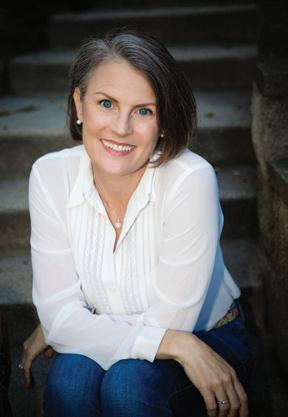
Charlotte Maya ’90
Post Hill Press, 2023
“SUSHI TUESDAYS: A MEMOIR OF Love, Loss, and Family Resilience” confides all that Charlotte Maya endured when she survived her beloved husband’s suicide — the shock and inexplicable loss, the what-ifs, the complexity of mental illness, and the source of a mother’s will to move forward. Maya’s memoir, based on her blog of the same name, is a universal guide to finding light and joy in the darkest depths of grief.
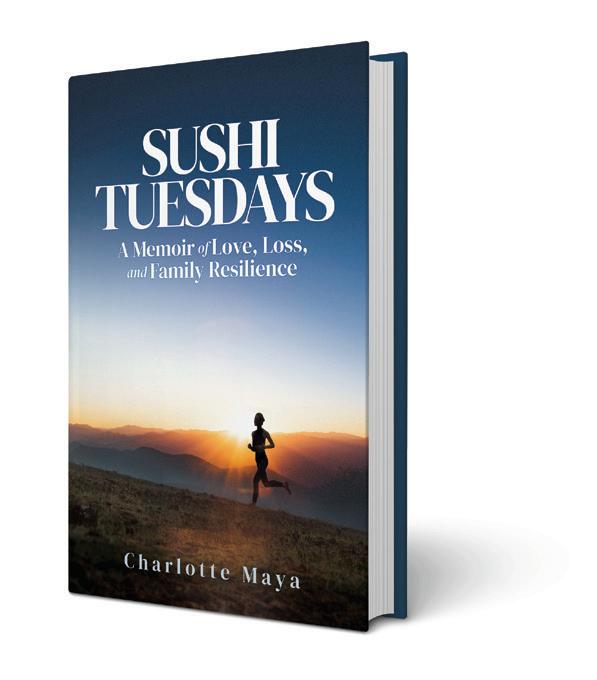
What compelled you to share your experience?
In 2007, I returned home from hiking with my sons, then ages 6 and 8, to find a police car in my driveway, lights flashing silently. The officer and priest who told me of Sam’s suicide said, “We will tell your chil-
What do you understand now about surviving suicide and grief in general?
I don’t believe that “time heals all wounds.” Time ticks by and we get older, but unless you do the work, it’s just time. Time gives you the opportunity to do the healing work, to face the things that are difficult and painful and that will trip you up unless you do the work.
How did the “Sushi Tuesdays” ritual begin?
Tuesdays — at least while my kids were at school — became a sacred part of my healing. Except for yoga and therapy, I didn’t make appointments — not with friends for coffee and not with MDs, CPAs or JDs. I gave myself a few hours to cry or go running or out for a sushi lunch, party of one.
How did you turn such devastation into a life so hopeful and bright?
The challenge is developing the capacity to hold grief while embracing the life that is ours to live. This book is about the love that Sam had for us even though he was hurting.
I was struck by the beautiful and unique gifts of friends and strangers. Katherine Tasheff ’90, my dear friend from Rice, emailed me morning and night for 365 days following Sam’s death. One friend walked my kids to school, because we were often late. Another sewed my son’s favorite blanket back together after he angrily shredded it.
Eventually, I did fall in love again (with a widower), and we married and blended our families. We joke that we don’t keep the skeletons in the closets at our house; we put their pictures up on the piano and on the walls and on the fireplace mantel, because they are how we got here.
— INTERVIEW BY JODIE
SADOWSKY
ALUMNI 50 RICE MAGAZINE FALL 2023
Visit magazine.rice.edu/maya to read an excerpt of Charlotte’s touching book.
BOOKS
Morton Feldman
Friendship and Mourning in the New York Avant-Garde
Ryan Dohoney ’01
Bloomsbury Academic, 2022
RYAN DOHONEY, who serves as director of graduate music studies and associate professor of musicology at Northwestern University, describes himself as “a scholar of U.S. and European modernism and experimentalism in the 20th and 21st centuries [who combines] interdisciplinary methods with rigorous archival research.” Or, as he put it in an interview with Northwestern last year, “I write about weird music and the weird things it does to us.”
COOKBOOK Make This at Home

HERE’S A SIMPLE recipe from “The Vegan Chinese Kitchen: Recipes and Modern Stories from a Thousand-Year-Old Tradition” (Clarkson Potter, 2022) by Hannah Che ’17, ’19. In her cookbook, which recently earned a James Beard Award, Che provides a beautiful guide to traditional plant-based Chinese dishes that originated in Buddhist temples.
— LYNN GOSNELL
Stir-Fried Bean Sprouts with Chinese Chives
Qingchâo dòuyá
Serves 4
The Boxer Rebellion
— HILARY C. RITZ
Dohoney has now written two books about experimental composer Morton Feldman, who rose to prominence within the so-called New York School of the 1950s and 1960s. This second work focuses on Feldman’s New York School friendships and how they not only informed but also enabled and even structured his work. To all accounts, Feldman was a large, brash man who dominated rooms and conversations, yet he preferred intimate collaborations and private performances in his friends’ studios. He cherished his friendships for years and then mourned them for even longer. As Martin Iddon, professor of music and aesthetics at the University of Leeds, writes, “Feldman’s music becomes increasingly concerned, in Dohoney’s vivid account, with what survives, what endures, and what can still be heard, even as it ebbs.”

Bluejackets and Marines in China, 1900–1901
Emily Abdow ’19
U.S. Navy’s Naval History and Heritage Command, 2023
IN SUMMER 1900, the U.S., Great Britain, France, Japan and Russia sent a coalition force of 20,000 sailors, soldiers and marines to fight their way across a hundred miles of hostile territory from the port of Dagu to Beijing. Their mission: to liberate the Legation Quarter, which was home to diplomats from 11 foreign powers and which had been under siege for 55 days by Chinese “Boxers” backed by Chinese imperial troops. The Boxers, so named for their public displays of martial arts, strove to purge all foreign influence from their lands.
This small war had big consequences: China’s loss weakened their imperial dynasty tradition so much that it collapsed only a decade later, when the 1911 Revolution established the Republic of China. It was also the American military’s first foray into coalition warfare, which wasn’t easy, considering that not even the Joint Army and Navy Board existed yet. As author Emily Abdow writes, that they prevailed “without adequate education, intelligence, protocols, staffing, and higher-level coordination was a testament to the officers on the ground.”
“The Boxer Rebellion” provides a richly detailed history accompanied by numerous maps of troop movements and dozens of fascinating blackand-white photos from the Navy’s archives. It is Abdow’s first book. — HR

4 heaping cups (8 ounces/220 grams) mung bean sprouts
2 tablespoons vegetable oil
1 tablespoon minced ginger
5 dried red chiles, snipped into 1/2-inch segments and seeds shaken out
4 ounces (110 grams) Chinese garlic chives or scallions, cut into 2-inch segments
1/2 teaspoon kosher salt, plus more to taste 1/4 teaspoon MSG, or to taste
Rinse the sprouts under water, then drain them in a colander and shake as dry as possible. If using home-grown sprouts, you don’t have to rinse them. Heat a wok or skillet over medium-high heat until a bead of water evaporates within 1 to 2 seconds on contact. Add the oil and swirl to coat the sides. Add the ginger and stir-fry until fragrant, about 30 seconds. Add the dried chiles and stir-fry until they begin to darken, about 30 seconds. Add the chives and stir-fry for 10 seconds, until wilted. Turn the heat to high, add the bean sprouts, and stir-fry for about 1 minute, until piping hot and reduced in volume but not yet releasing liquid. Season with salt and MSG to taste. Transfer to a dish and serve.
Read more about Che and her recipes at magazine.rice.edu/thousand.
ALUMNI MAGAZINE.RICE.EDU 51
LAST LOOK

52 RICE MAGAZINE FALL 2023
PHOTO BY BRANDON MARTIN
07.06.2023
// Demolition began on Old Sid Richardson College to make room for two new residential colleges.
New Sid
Old Sid
Starting Strong
Pre-matriculation
As an incoming undergraduate, Audrey Odwuor ’17 was among the first cohorts of the Rice Emerging Scholars Program, whose mission is to ensure that high-potential students from under-resourced high schools have the support they need to succeed in STEM majors. Now a doctoral candidate in Earth system science at the University of California, Irvine, Audrey is studying wildfires and prescribed fire in California.
“I reflect often on the Rice Emerging Scholars Program. The people I met and the perspective I gained there shaped my entire Rice experience and continues to influence my career today. I learned the true value of mentorship, connection, how to face challenges with courage and optimism, and that the unconventional path keeps life interesting.”

Student success initiatives like the Rice Emerging Scholars Program ensure that every Owl has a strong foundation of support. To learn how you can make an impact, please contact Sara Rice Shafer, director of development, at 713-348-5848 or sarar@rice.edu.
programs are key to student success.
Audrey collects airborne pollutant samples generated by the 2021 Caldor Fire at the Blodgett Forest Research Station in the foothills of the Sierra Nevada.
Rice University, Creative Services–MS 95
P.O. Box 1892 , Houston, TX 77251-1892
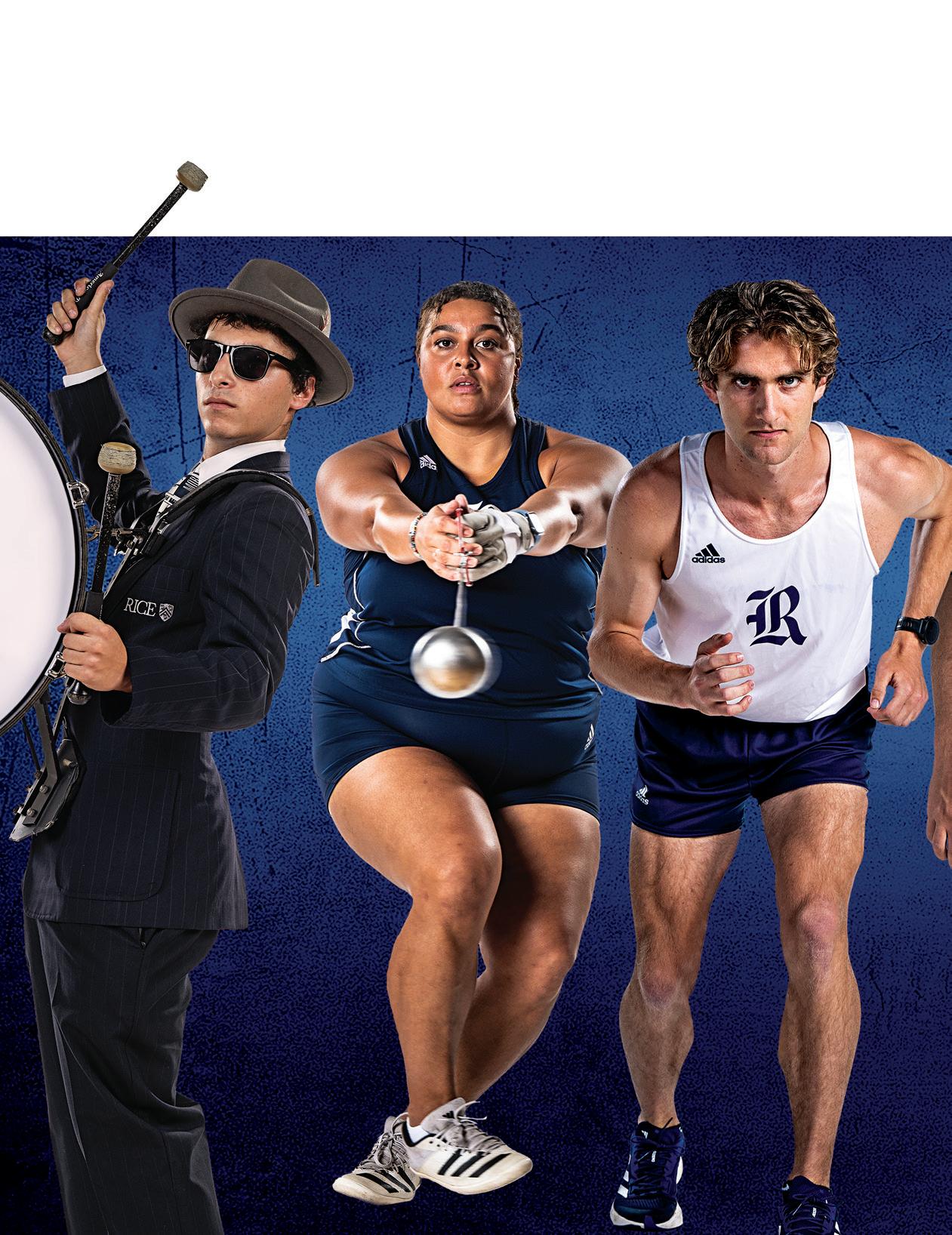
Nonprofit Organization U.S. Postage PAID Permit #7549 Houston, Texas






























 Clockwise from top left: Chelsea Zhao ’24, Enoch ’25, Aiden Li ’25, Jadir da Silva ’26, Chloé Khuri ’26, and Irene Wang ’24 (left) and MyCo Le ’24 (right)
Clockwise from top left: Chelsea Zhao ’24, Enoch ’25, Aiden Li ’25, Jadir da Silva ’26, Chloé Khuri ’26, and Irene Wang ’24 (left) and MyCo Le ’24 (right)















 MIKE WILLIAMS
MIKE WILLIAMS
 Rosemary Hennessy University of Minnesota Press, 2023
Rosemary Hennessy University of Minnesota Press, 2023
 Tara SimpsonSullivan
Catarina Albuquerque
Josh Pearcy
Tara SimpsonSullivan
Catarina Albuquerque
Josh Pearcy
 BY ANDREW BELL
PHOTOS BY JEFF FITLOW
Keanu Dawes
BY ANDREW BELL
PHOTOS BY JEFF FITLOW
Keanu Dawes







 BY AUTUMN HORNE ’22
PHOTOS BY GUSTAVO RASKOSKY
BY AUTUMN HORNE ’22
PHOTOS BY GUSTAVO RASKOSKY






 BY LAURA FURR MERICAS
BY LAURA FURR MERICAS




 ’53 (BS, 1954)
’53 (BS, 1954)












